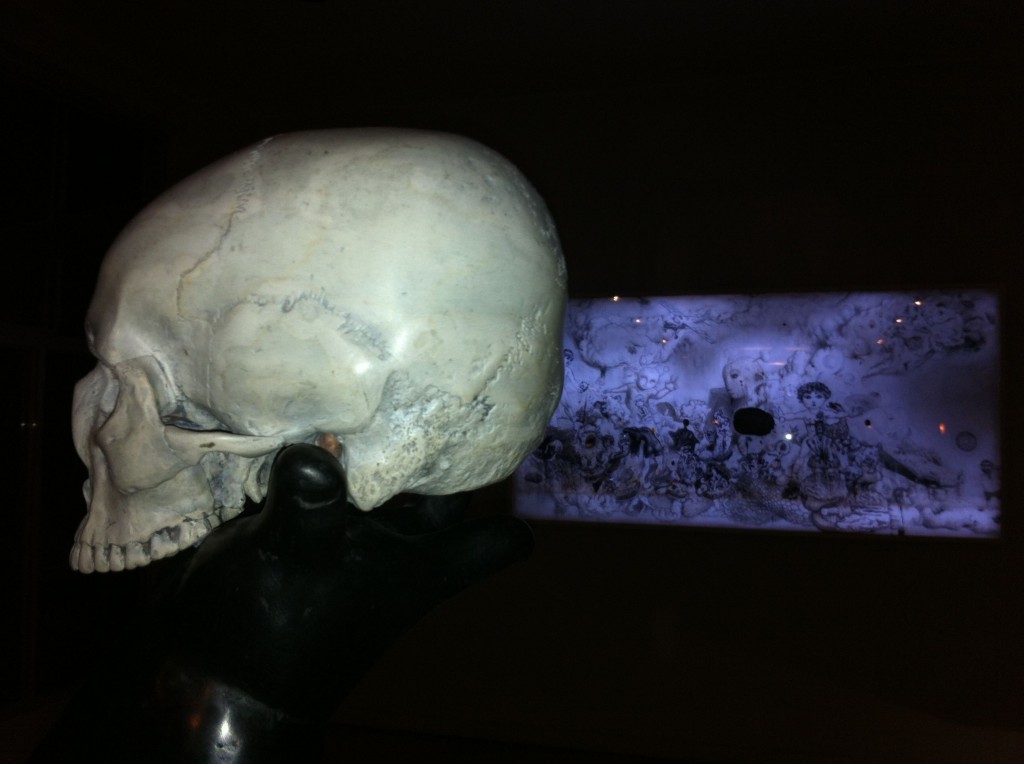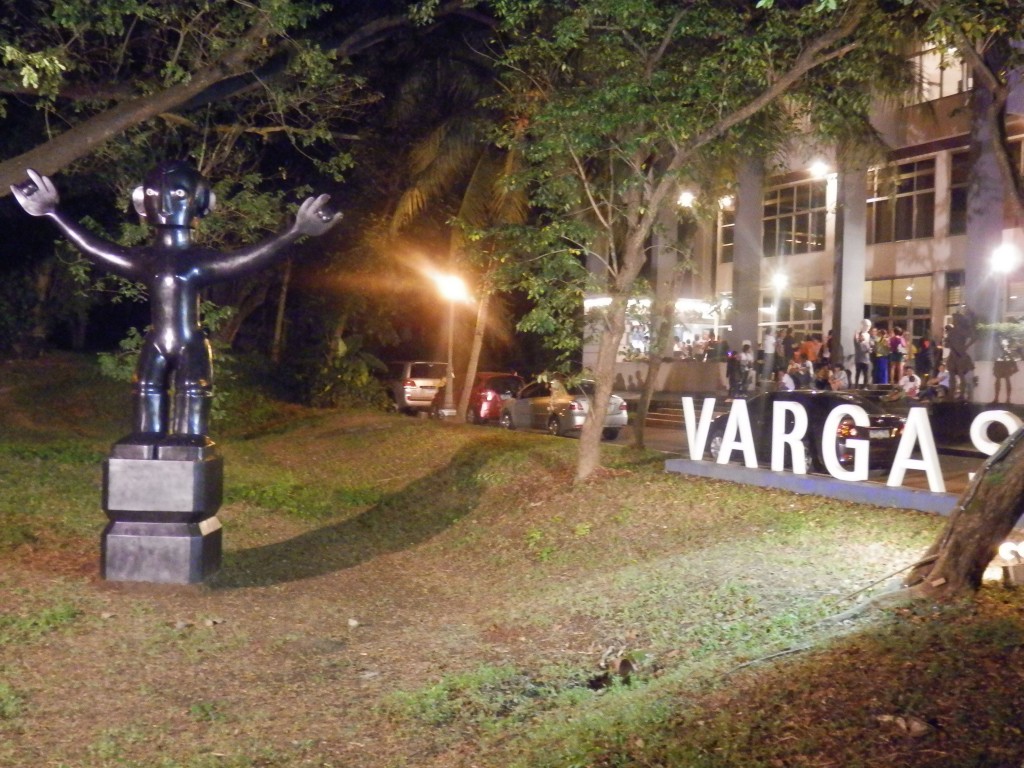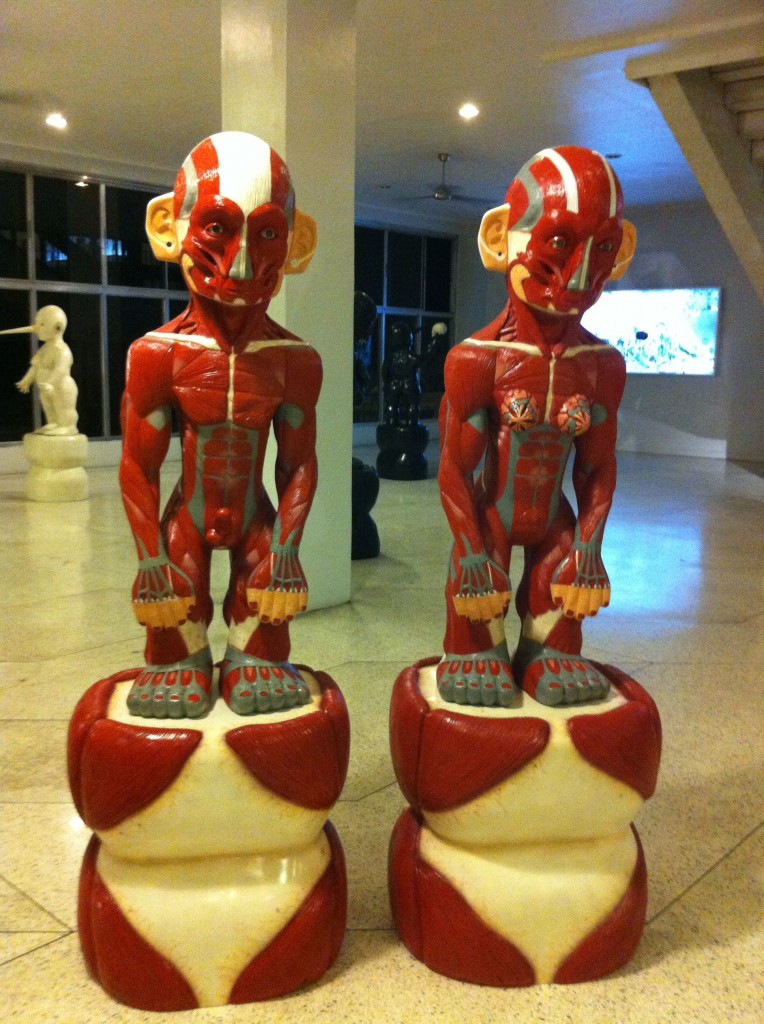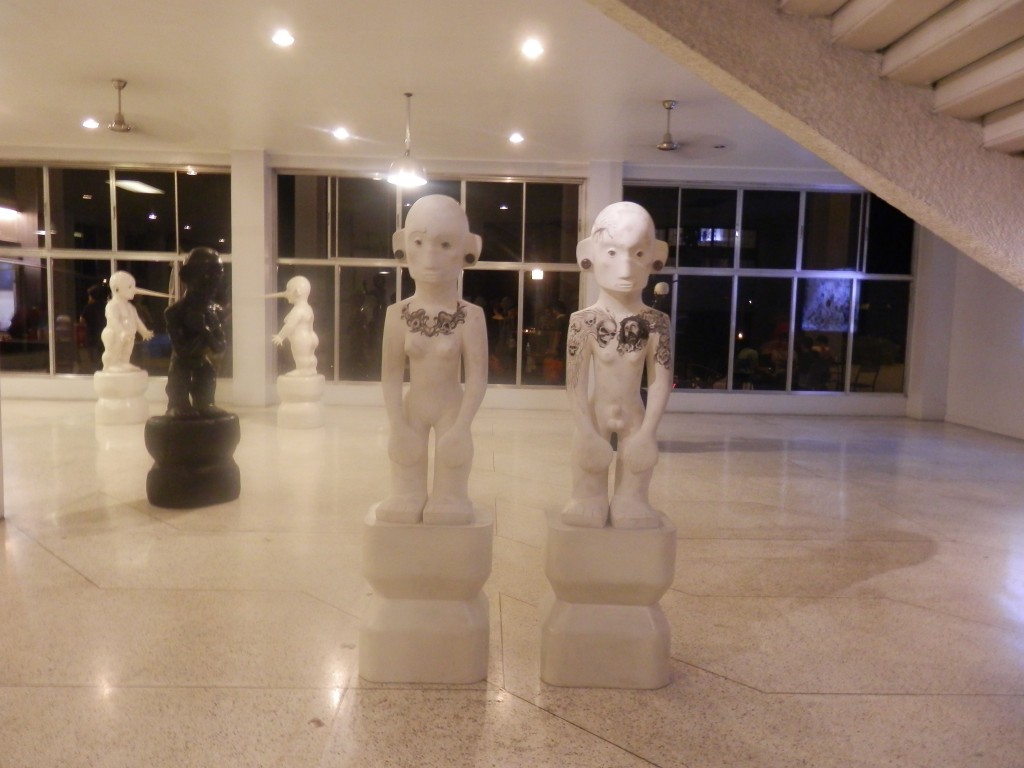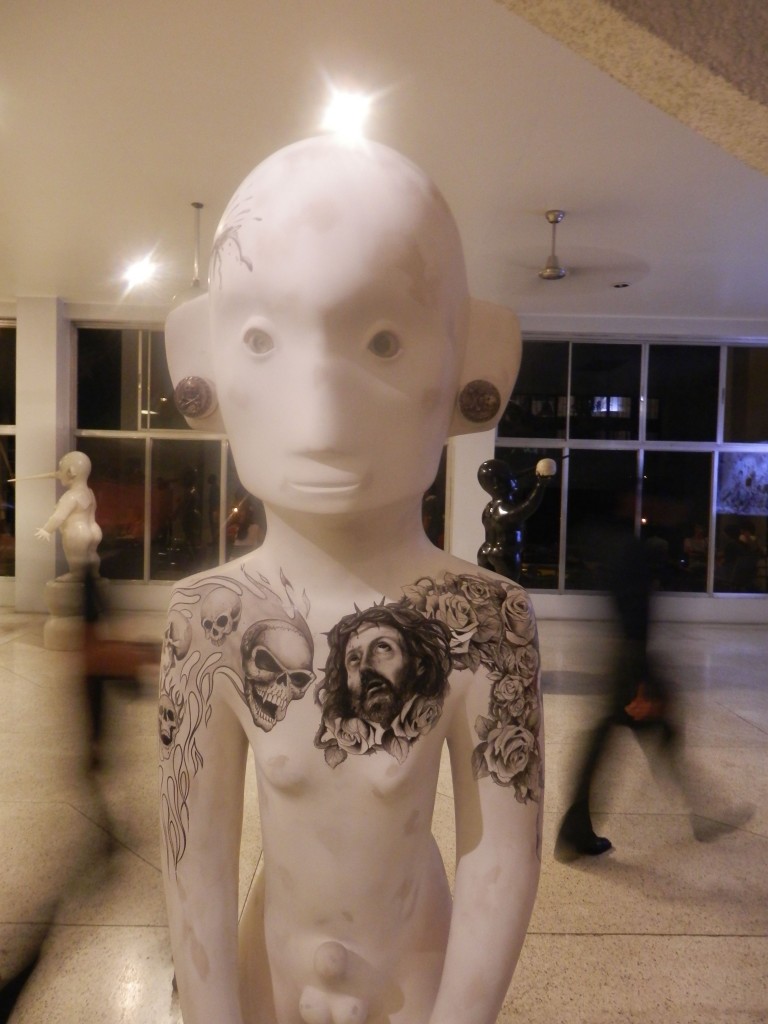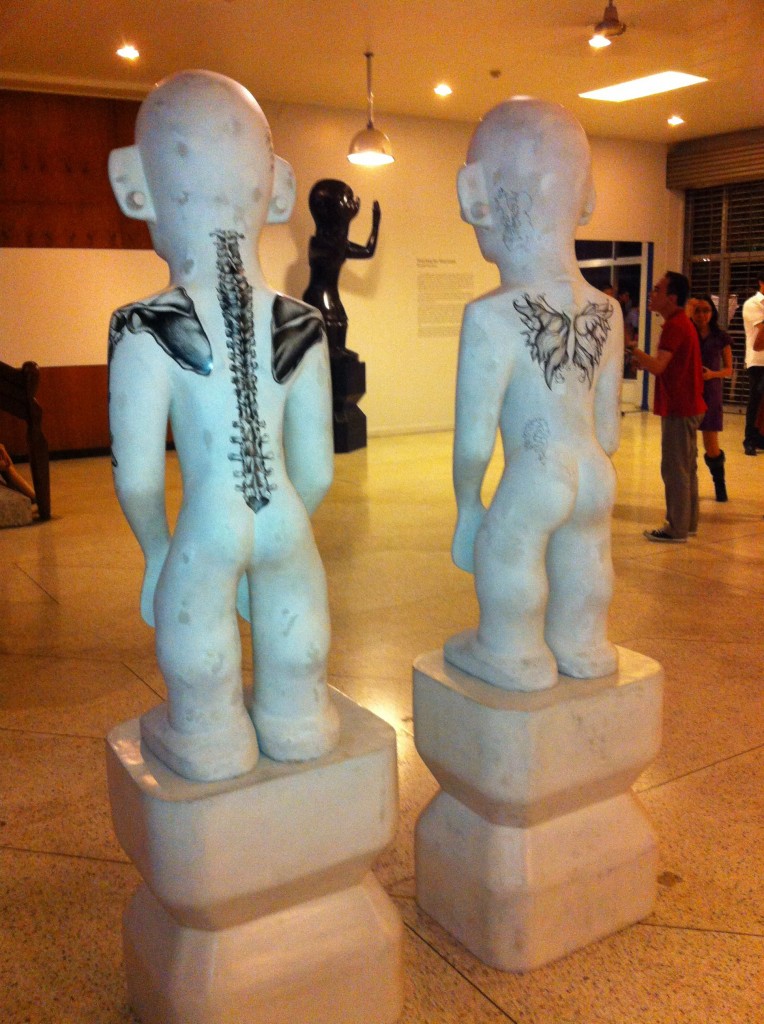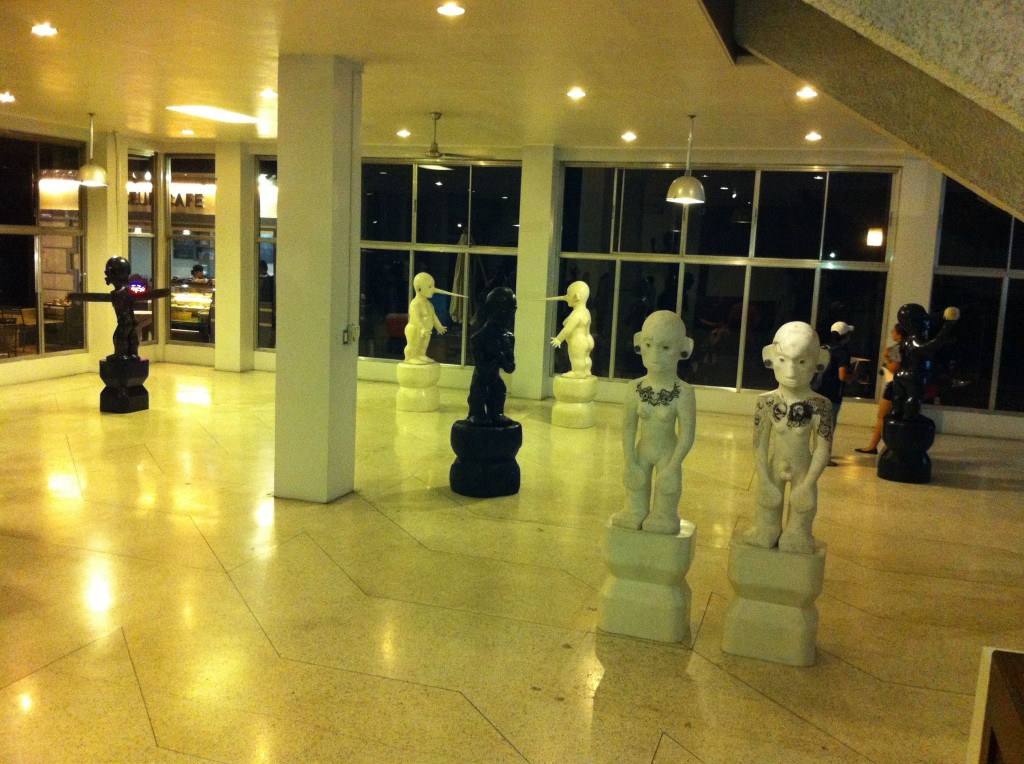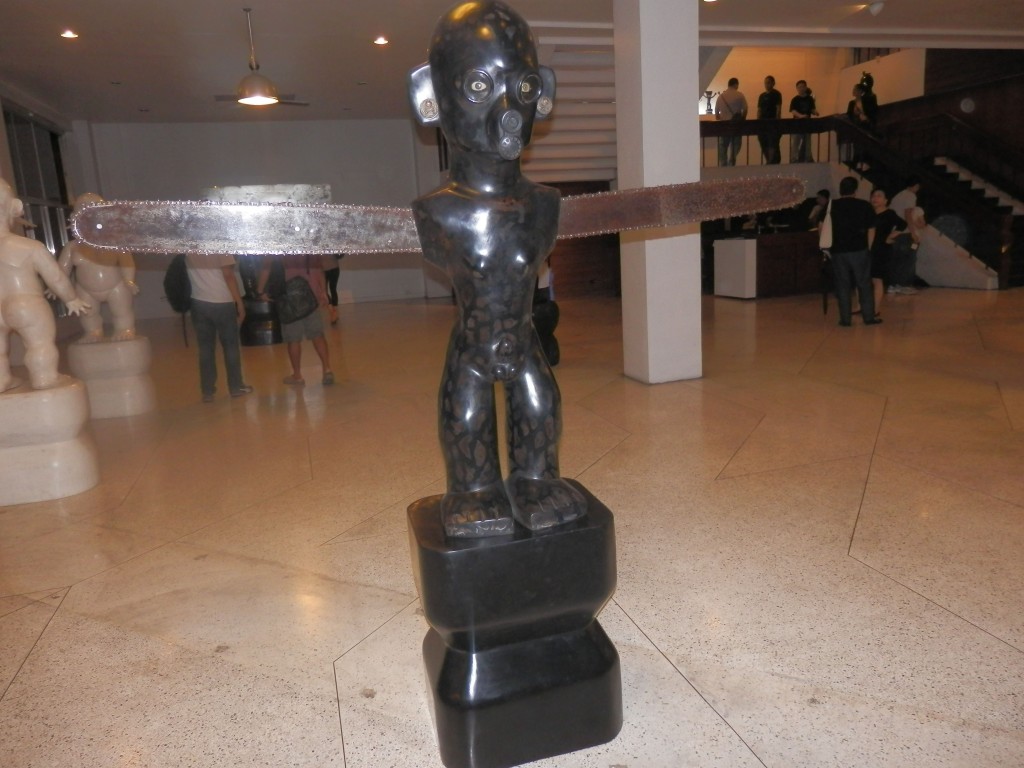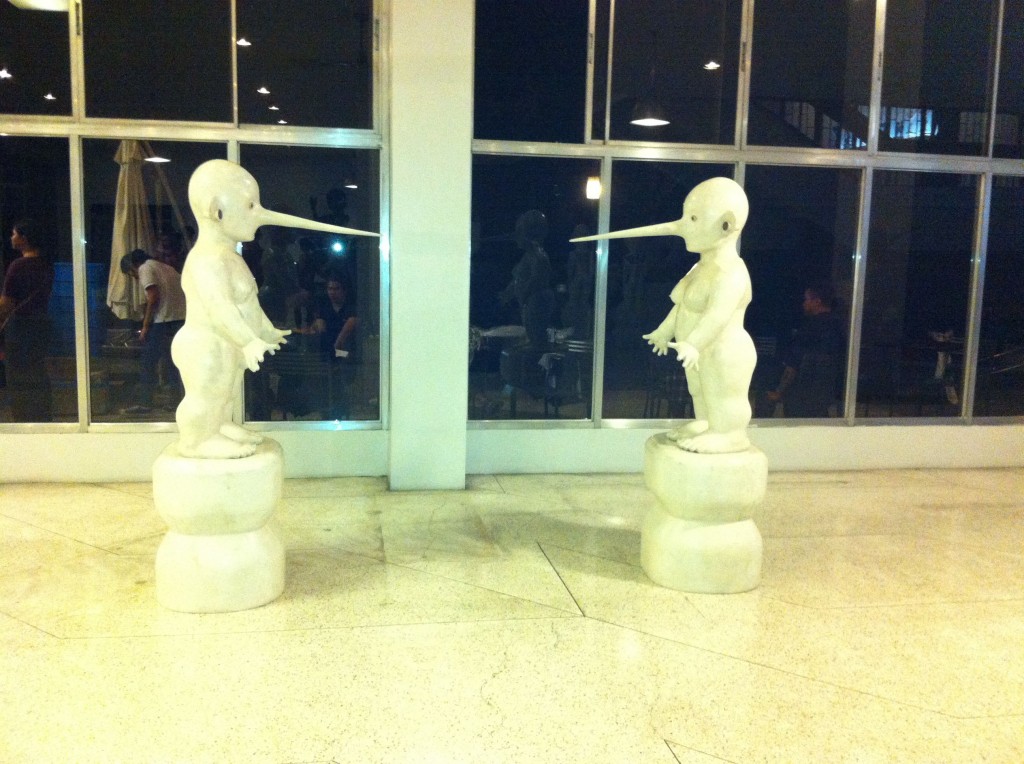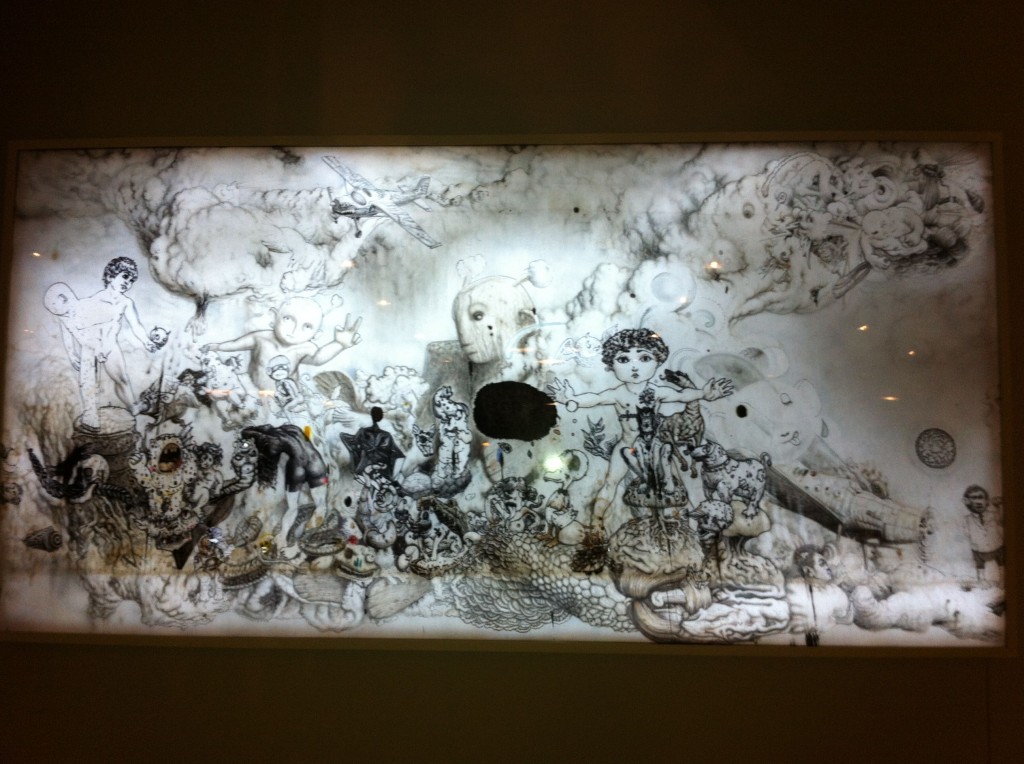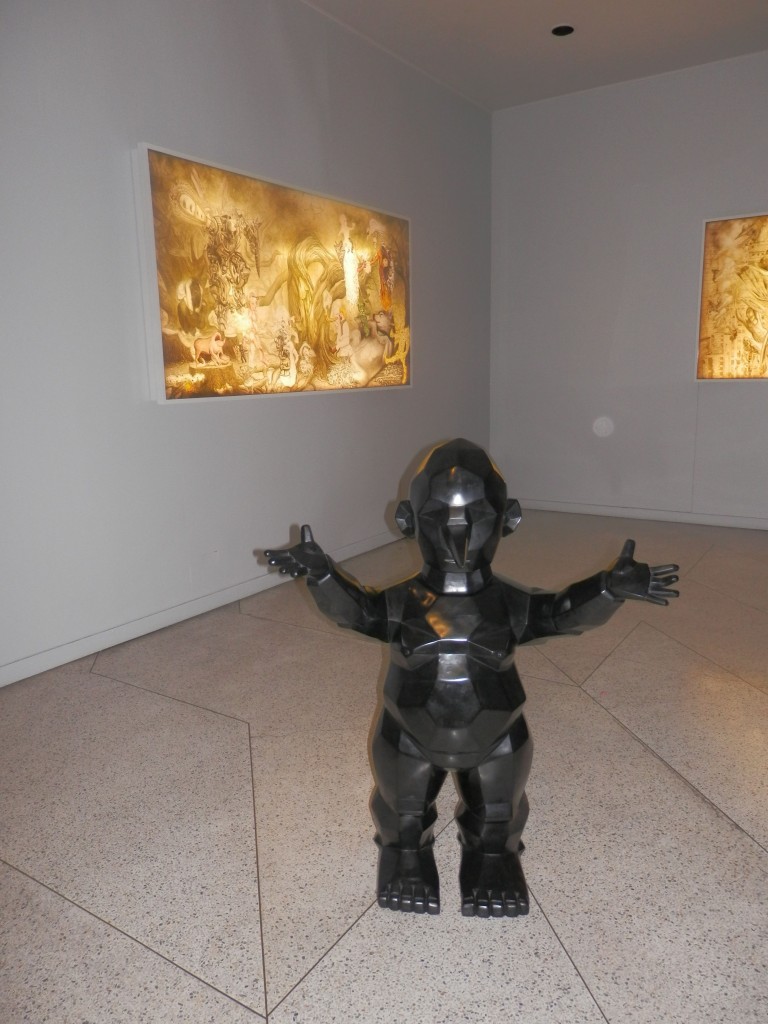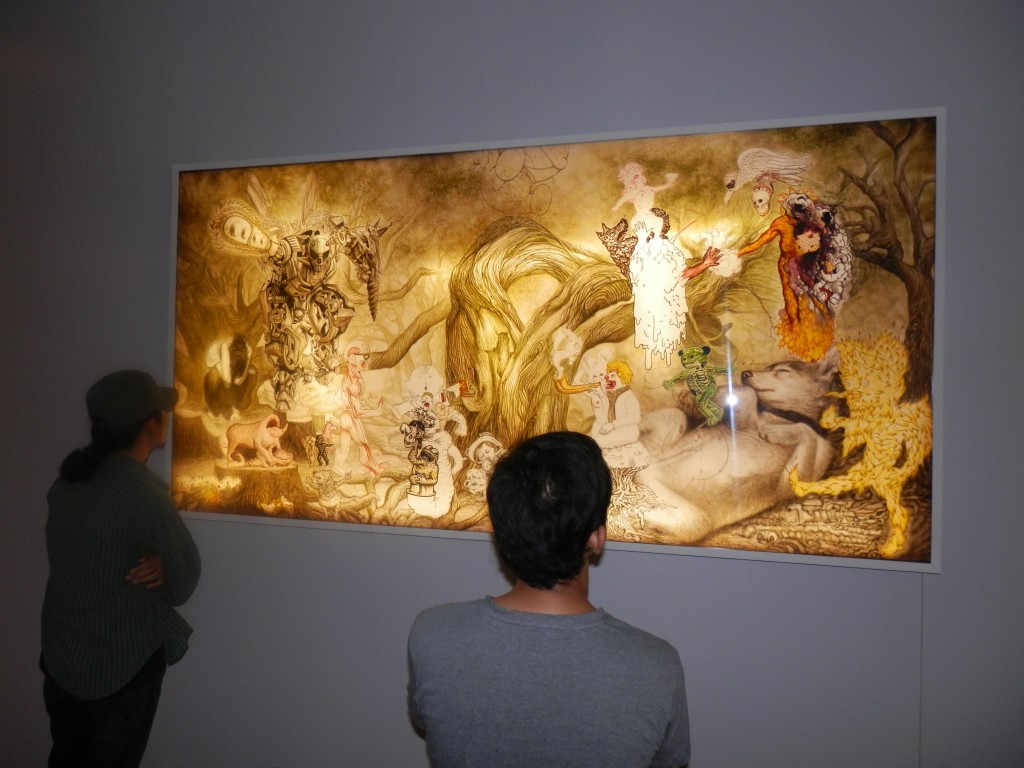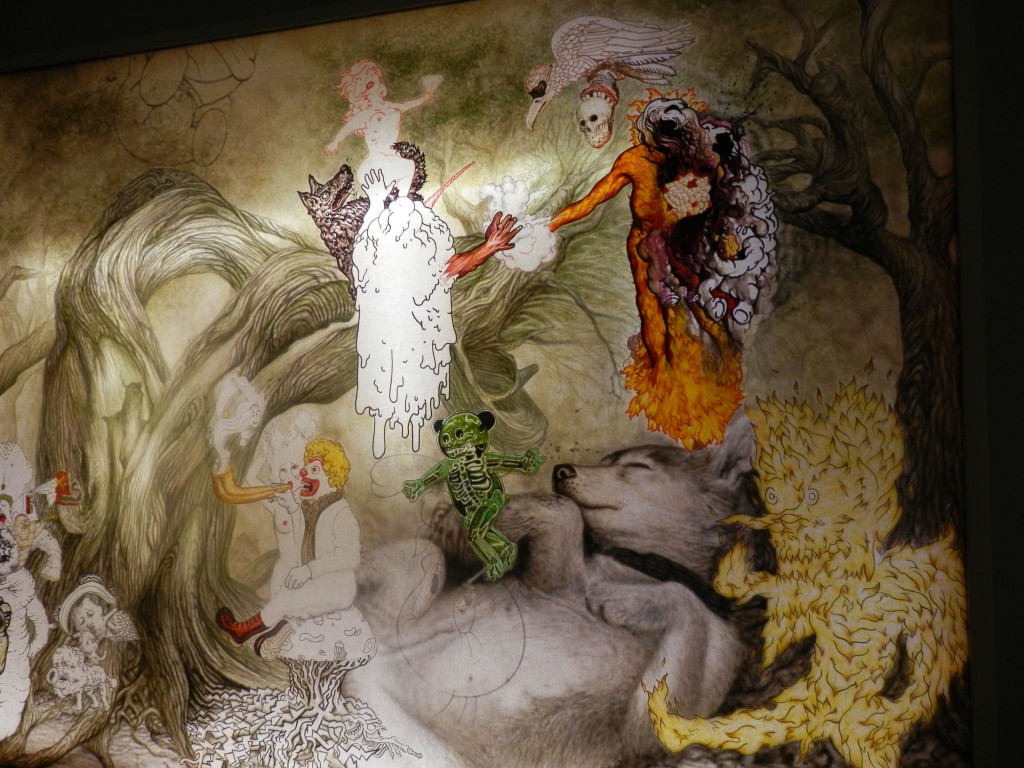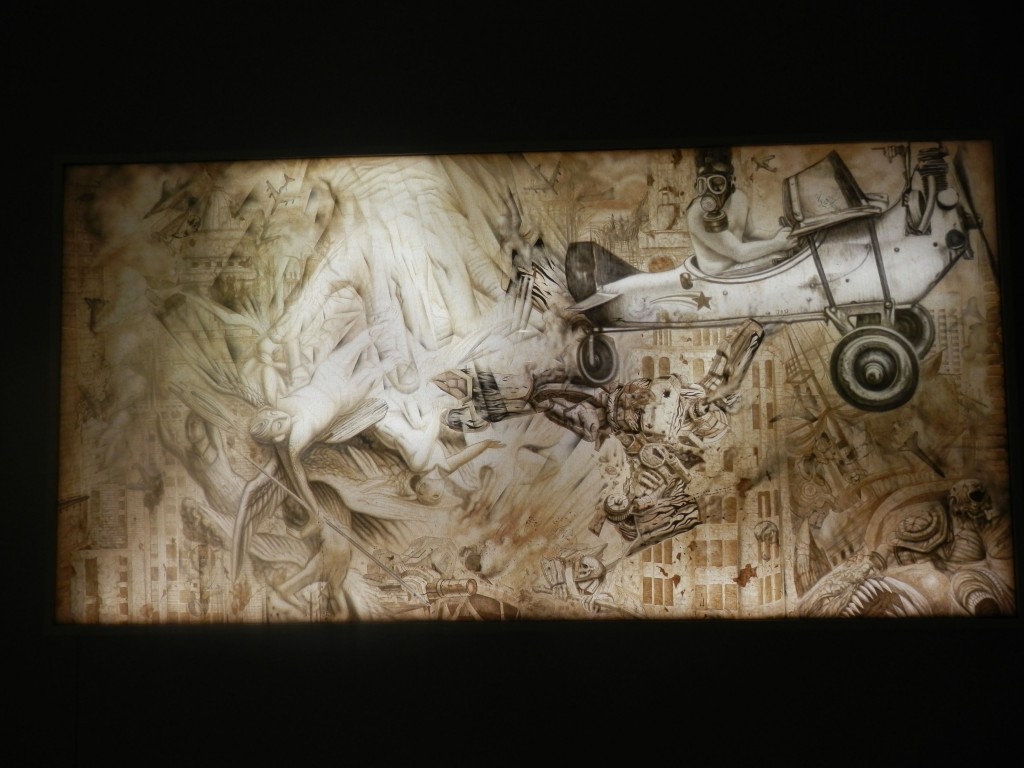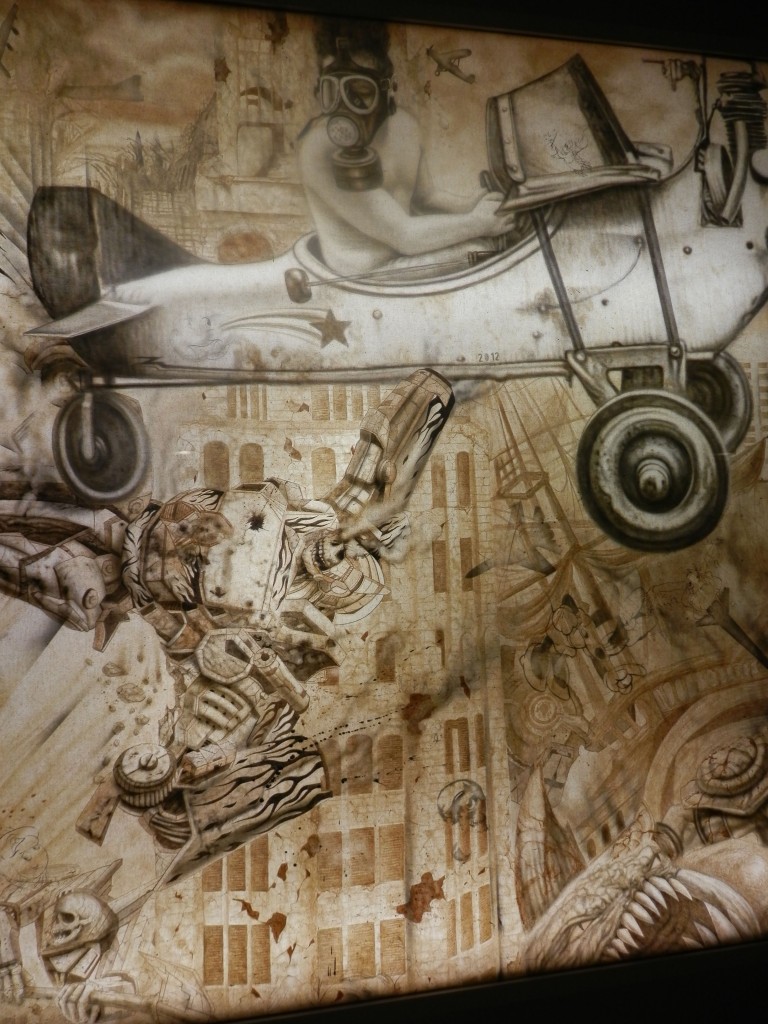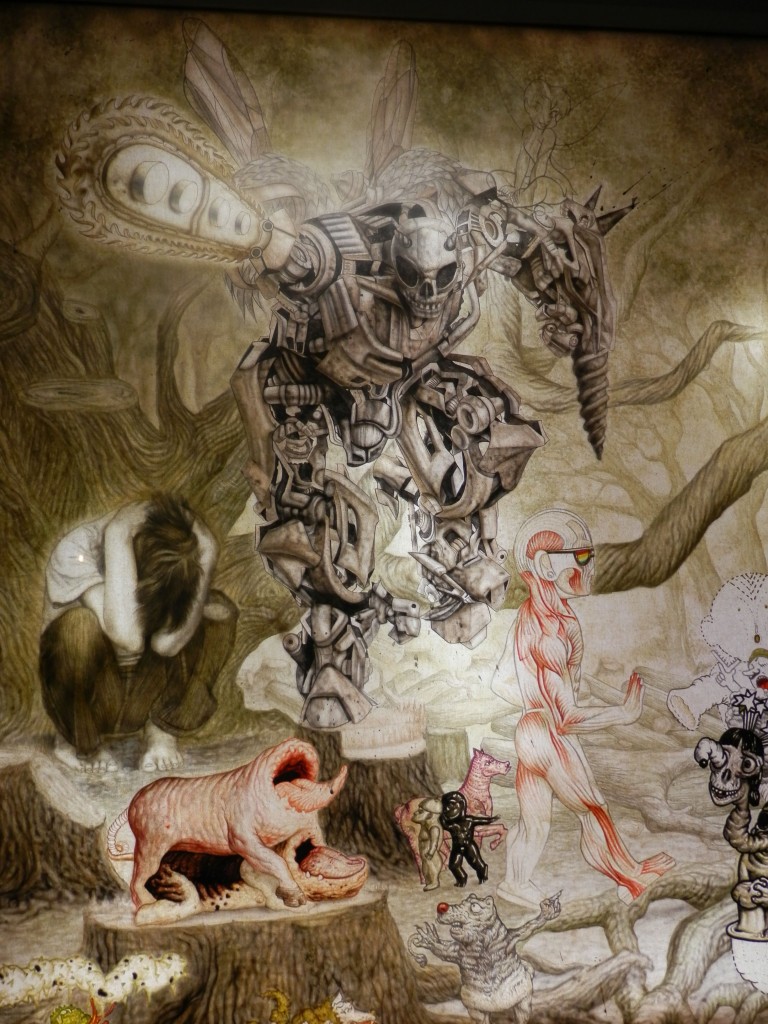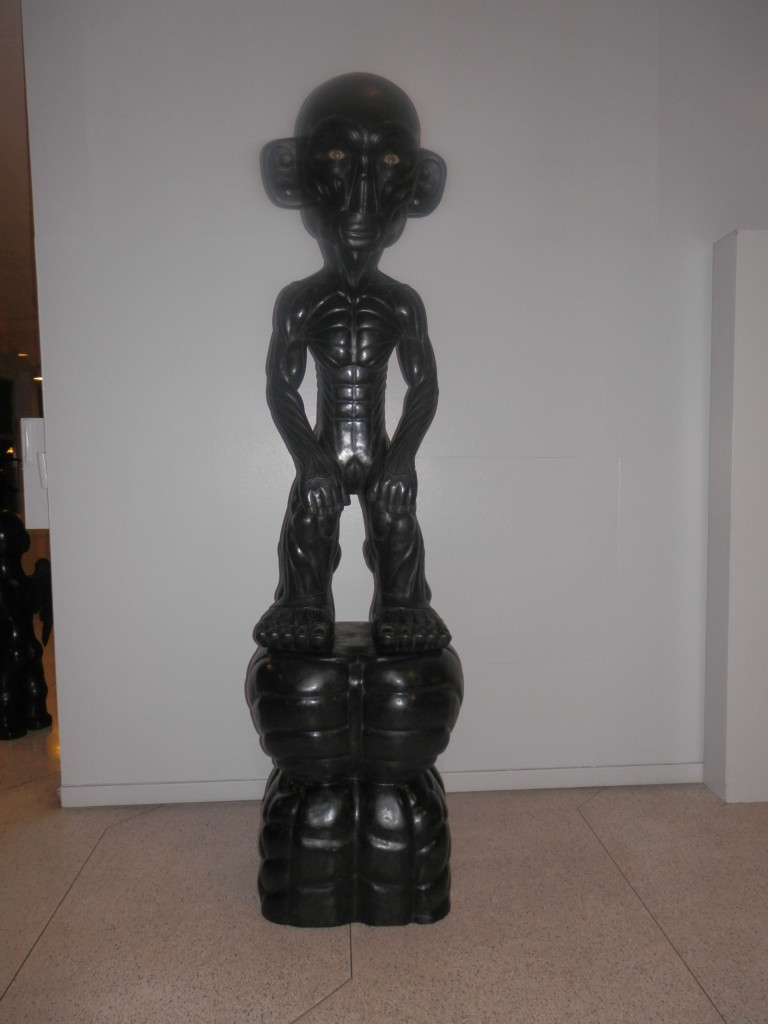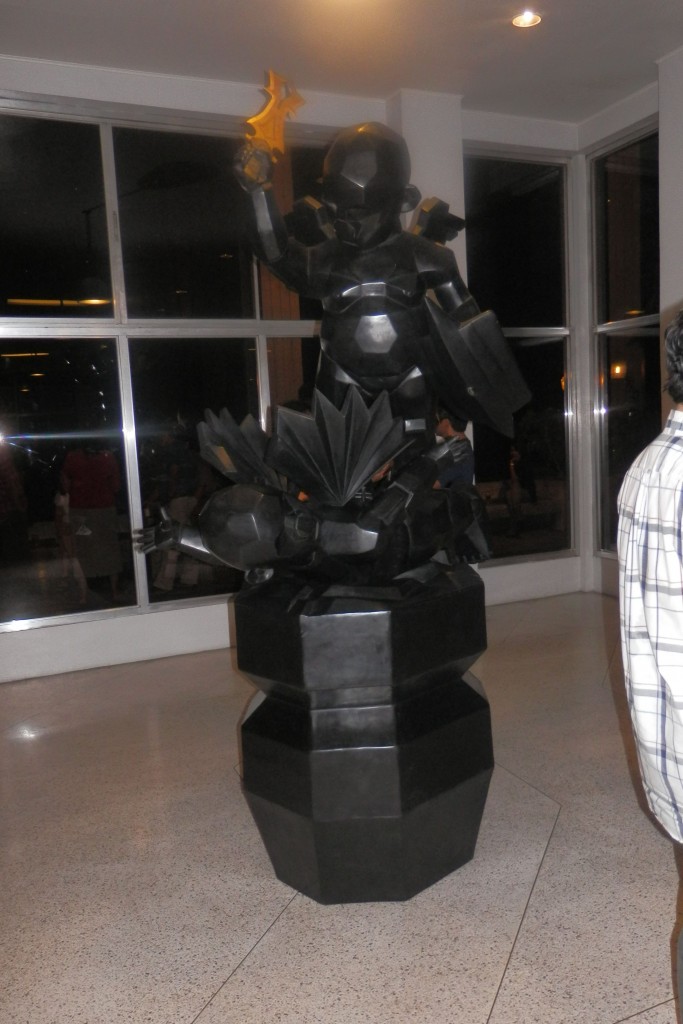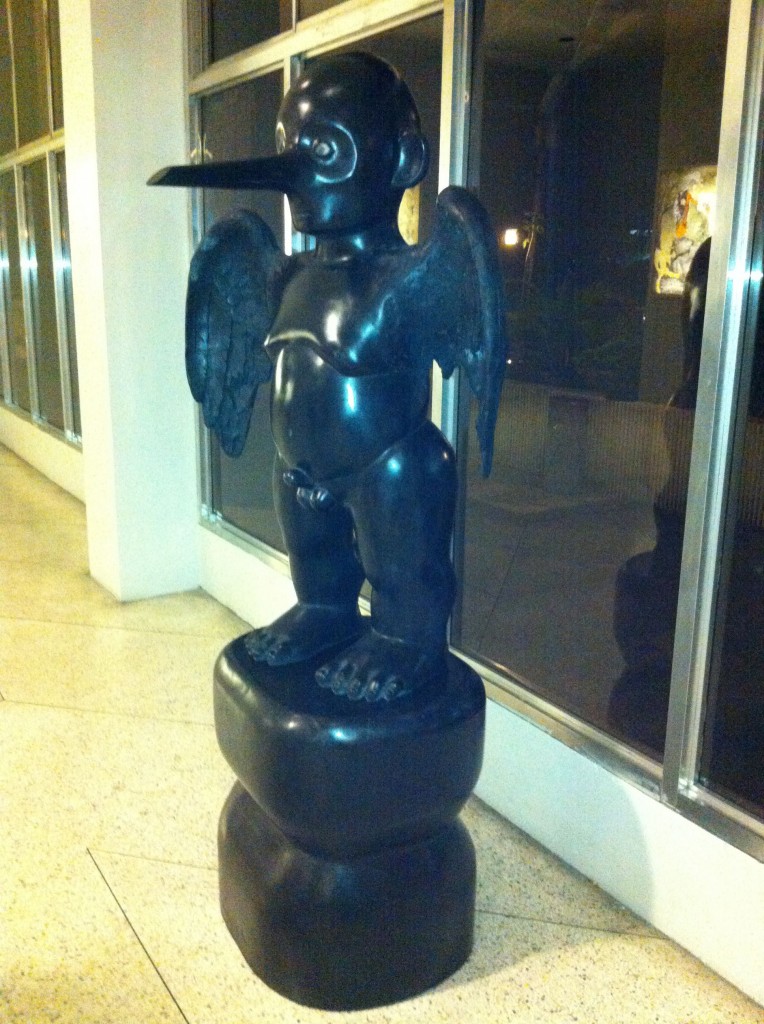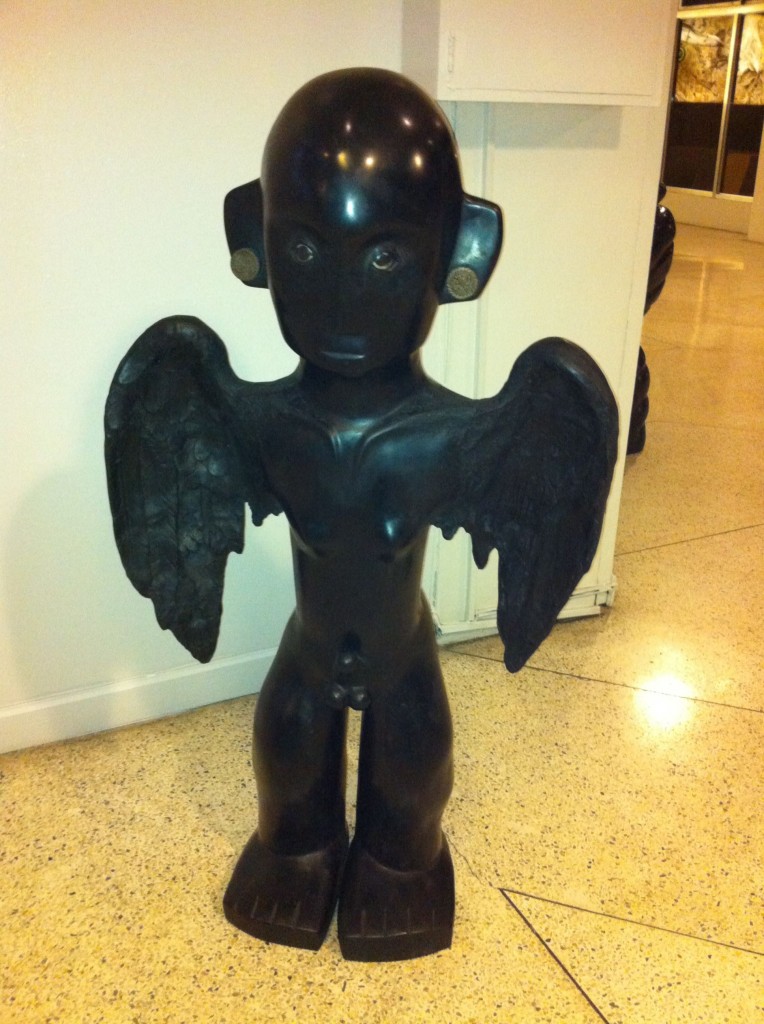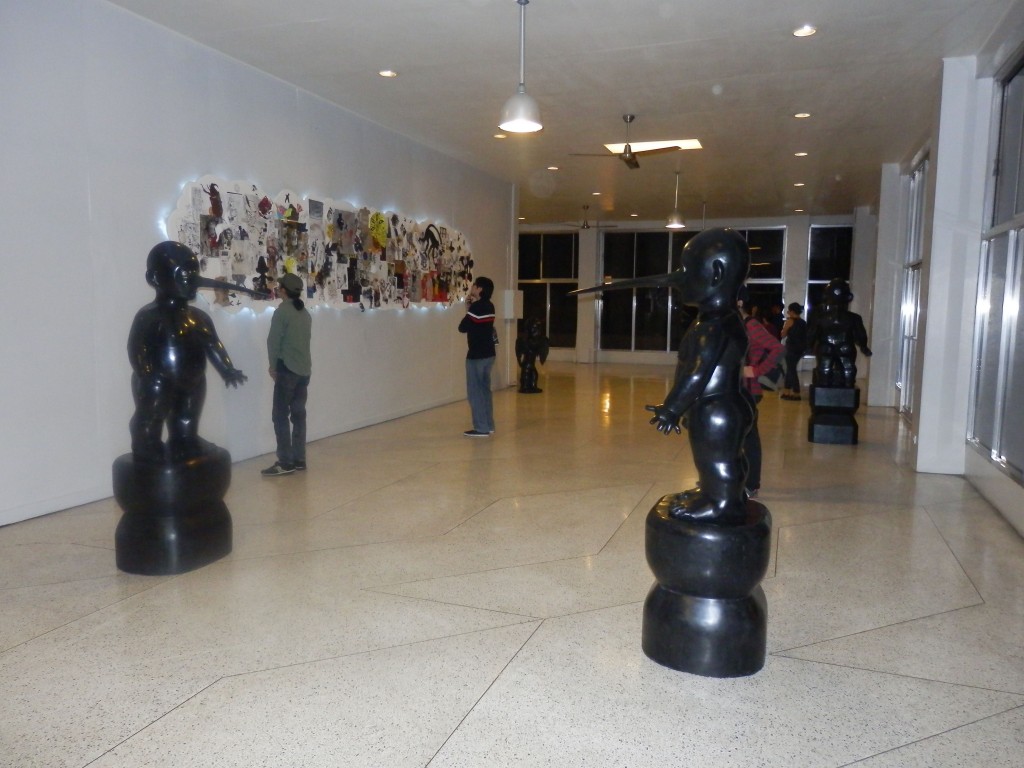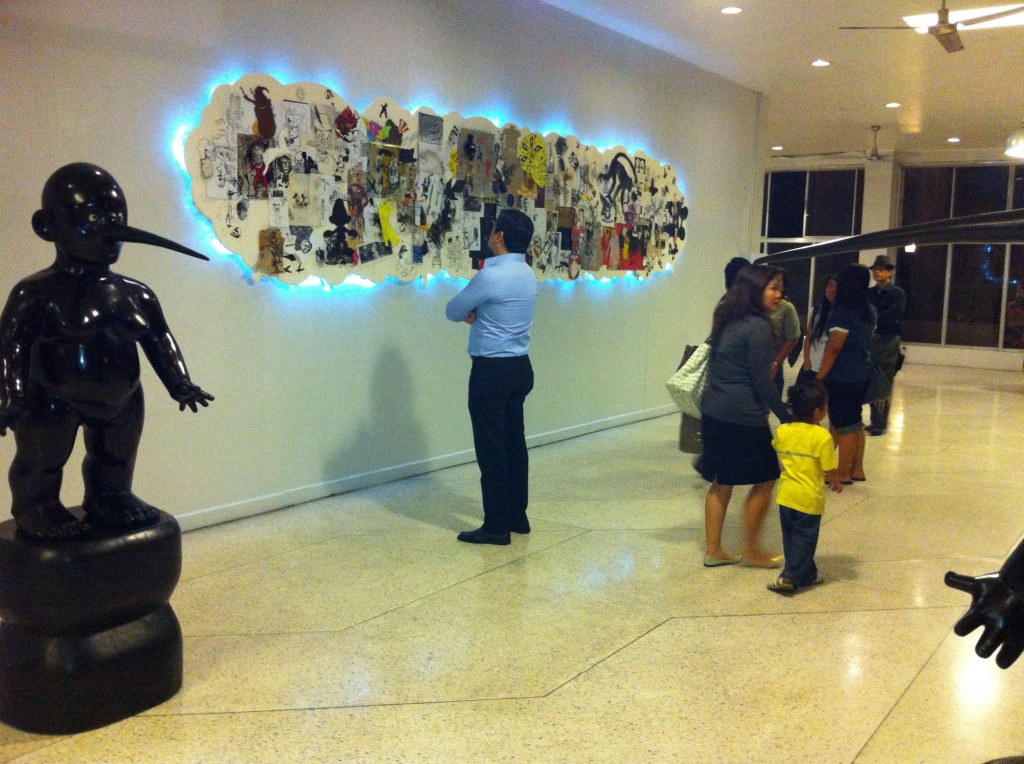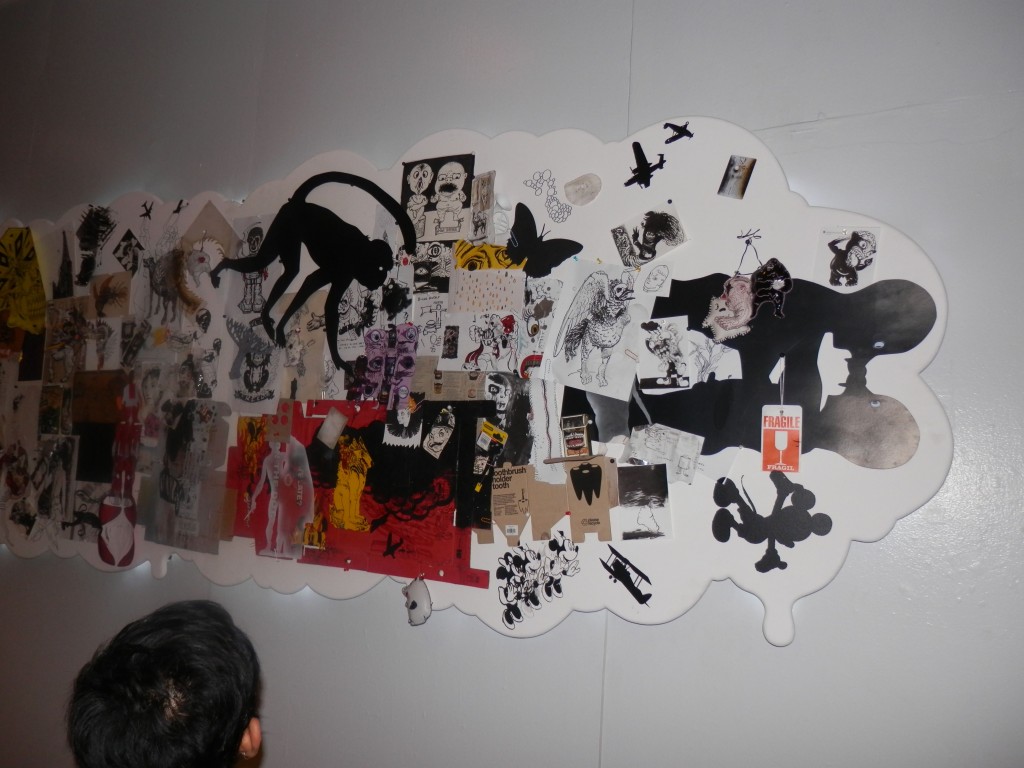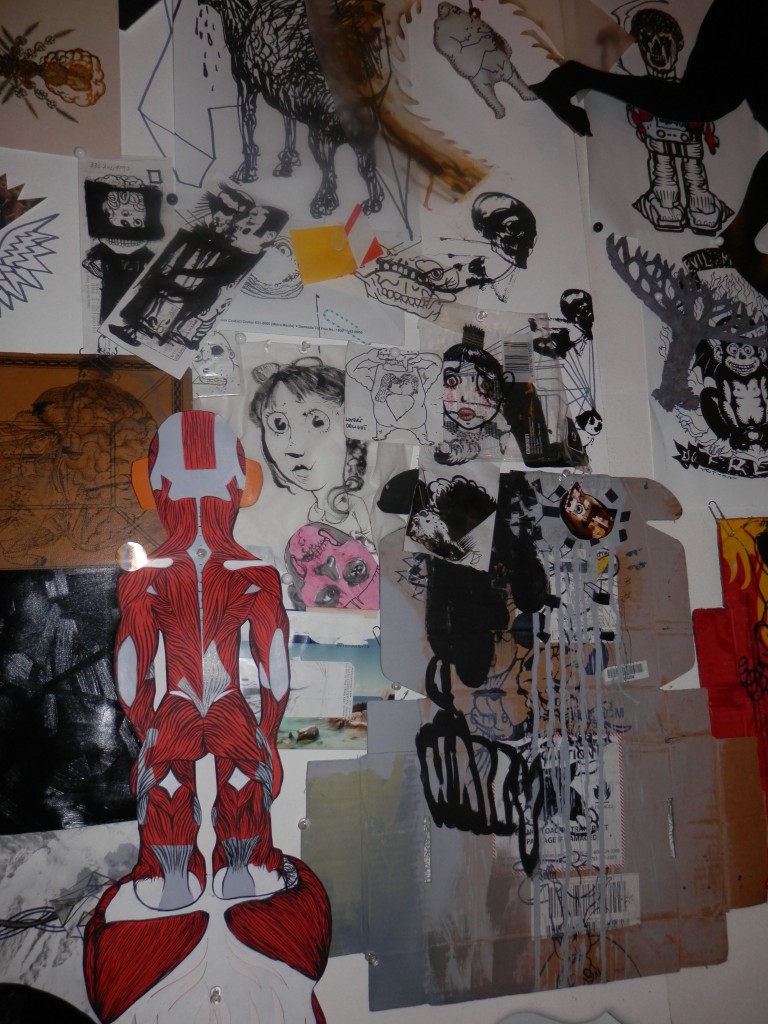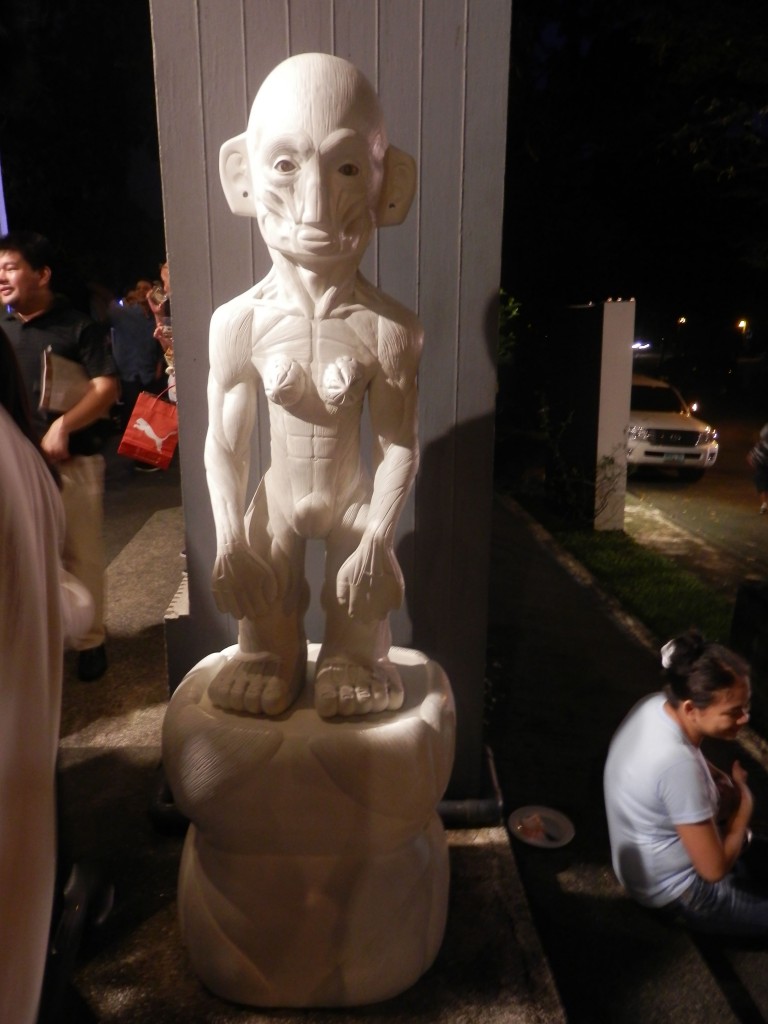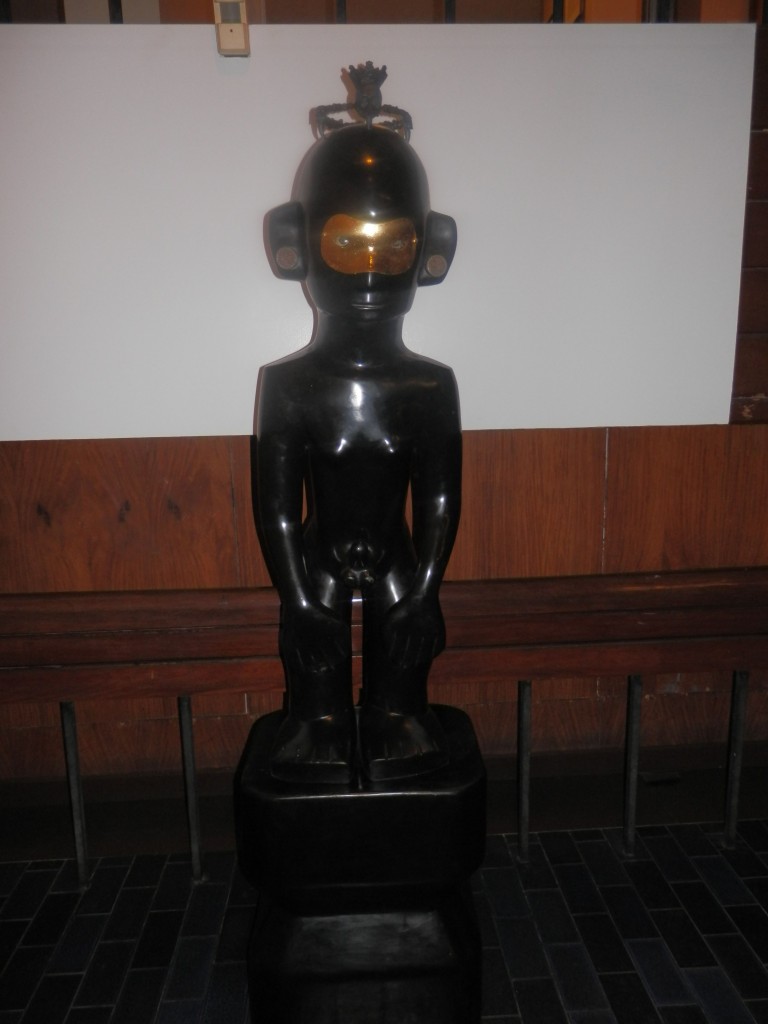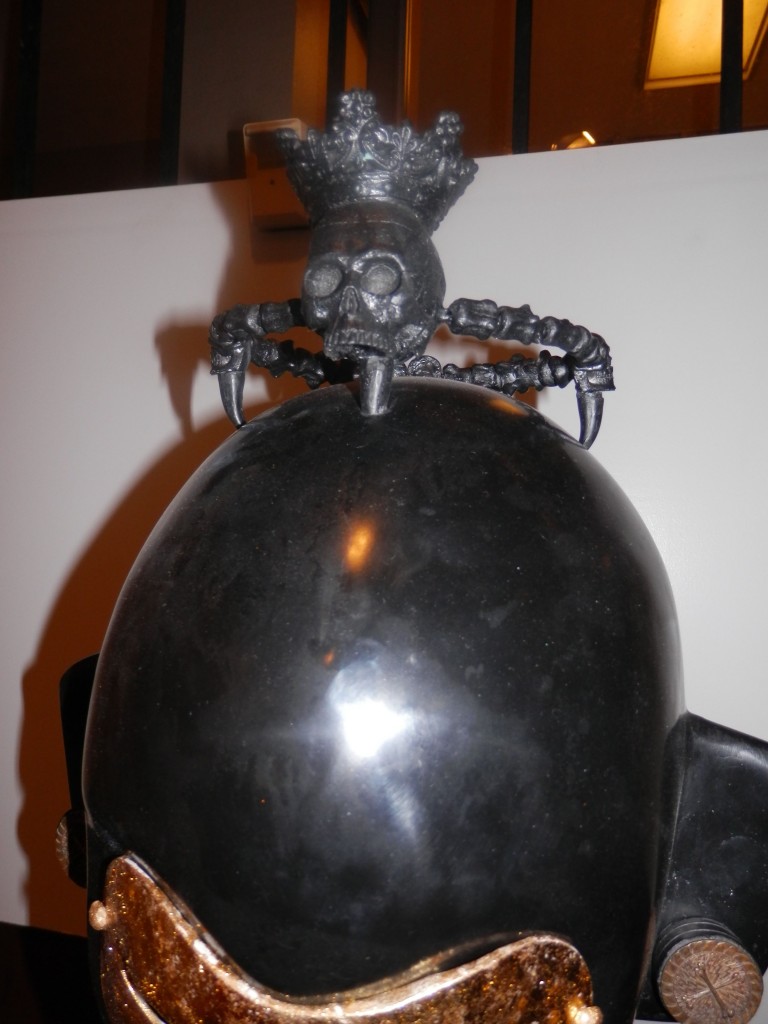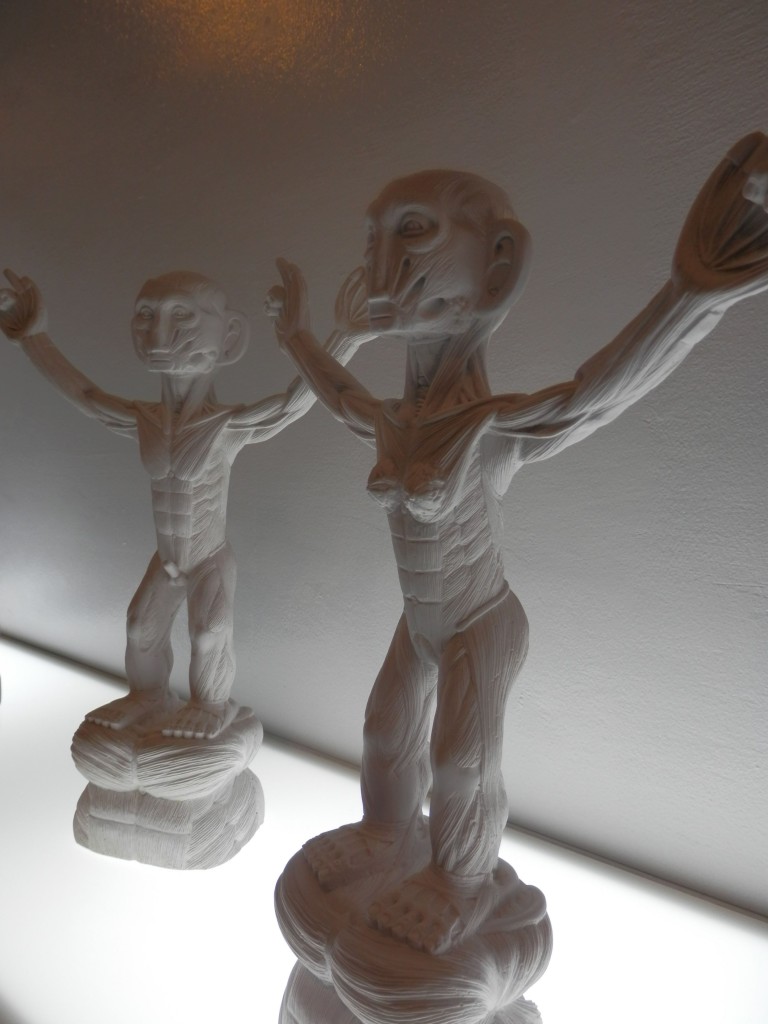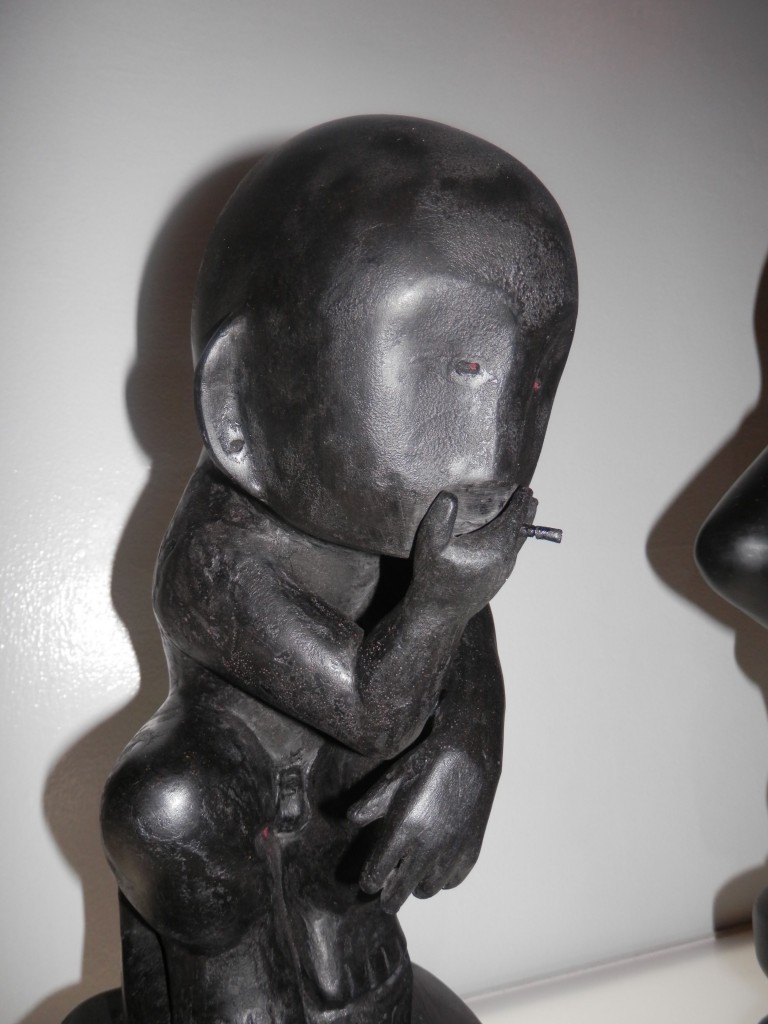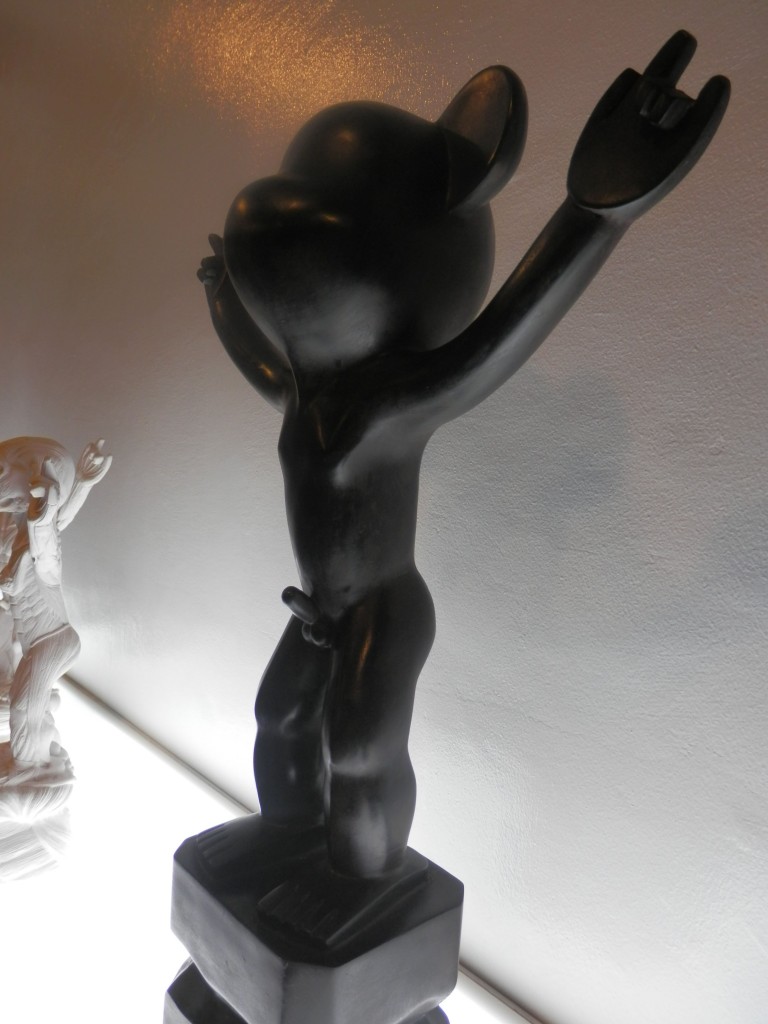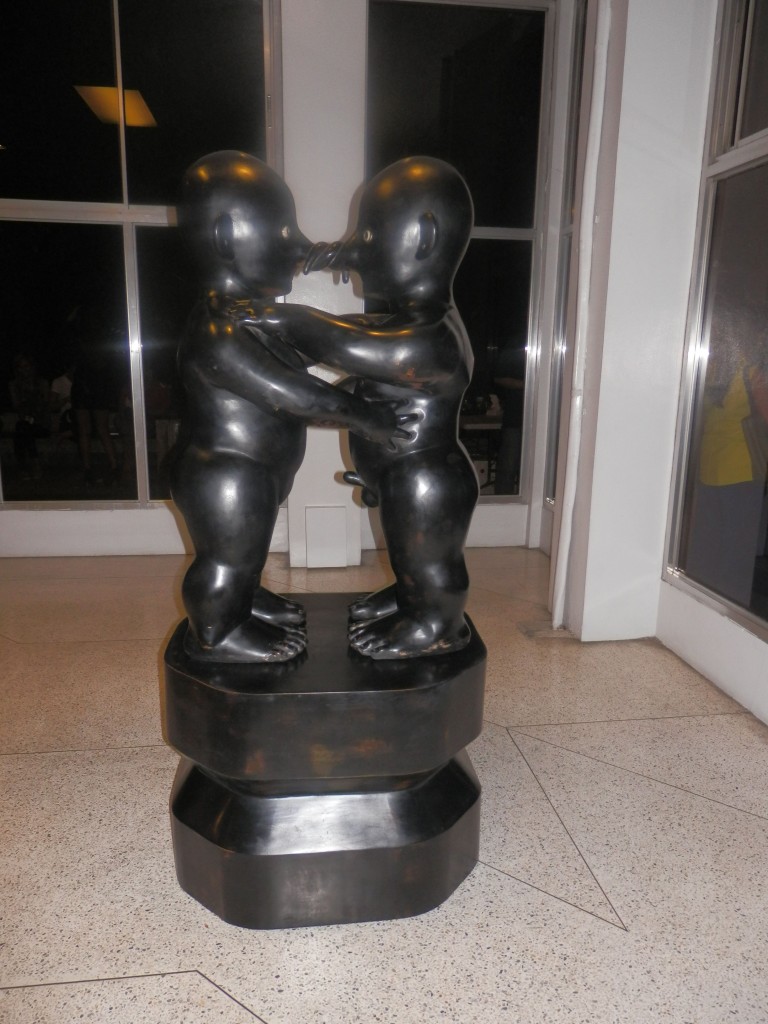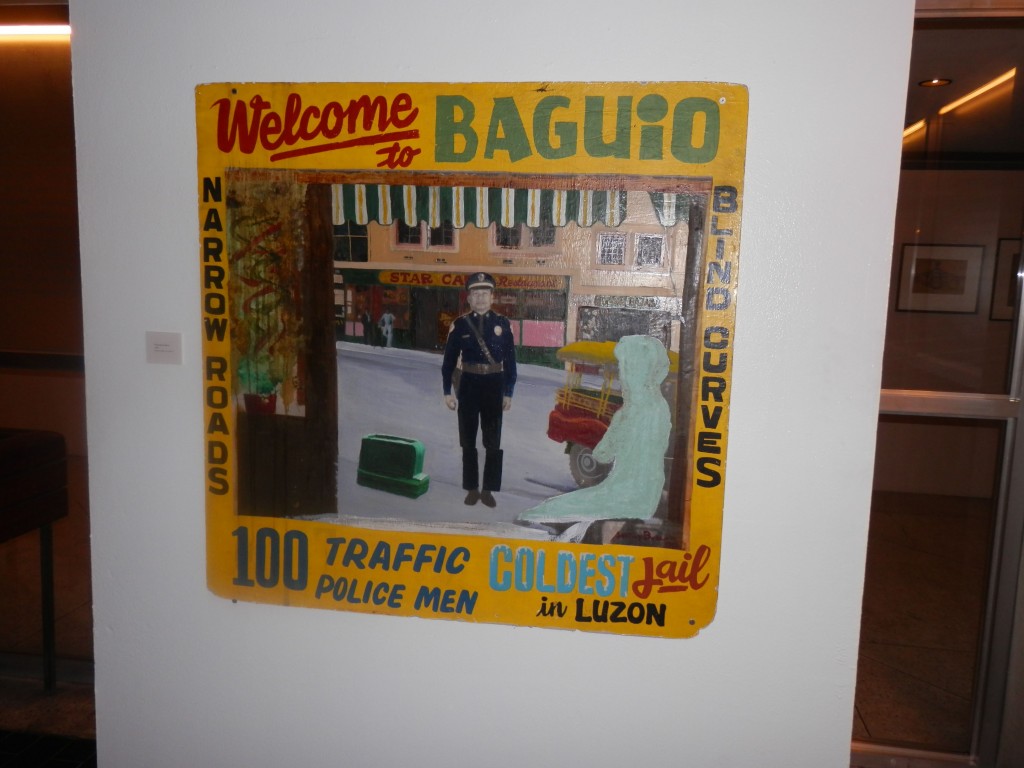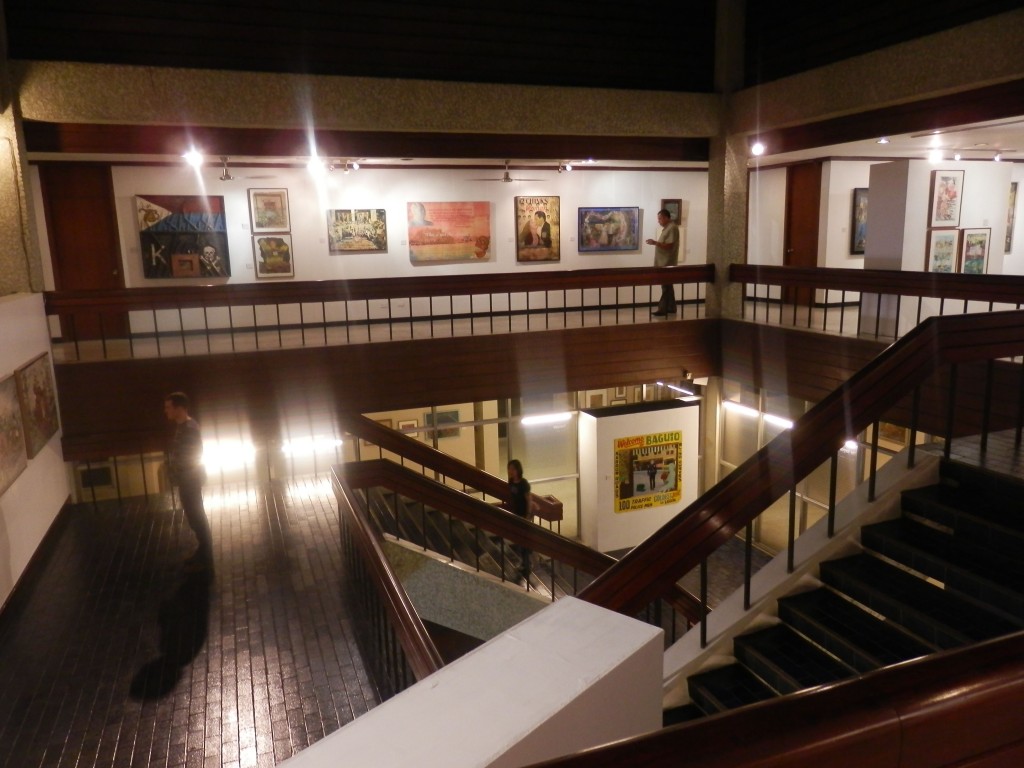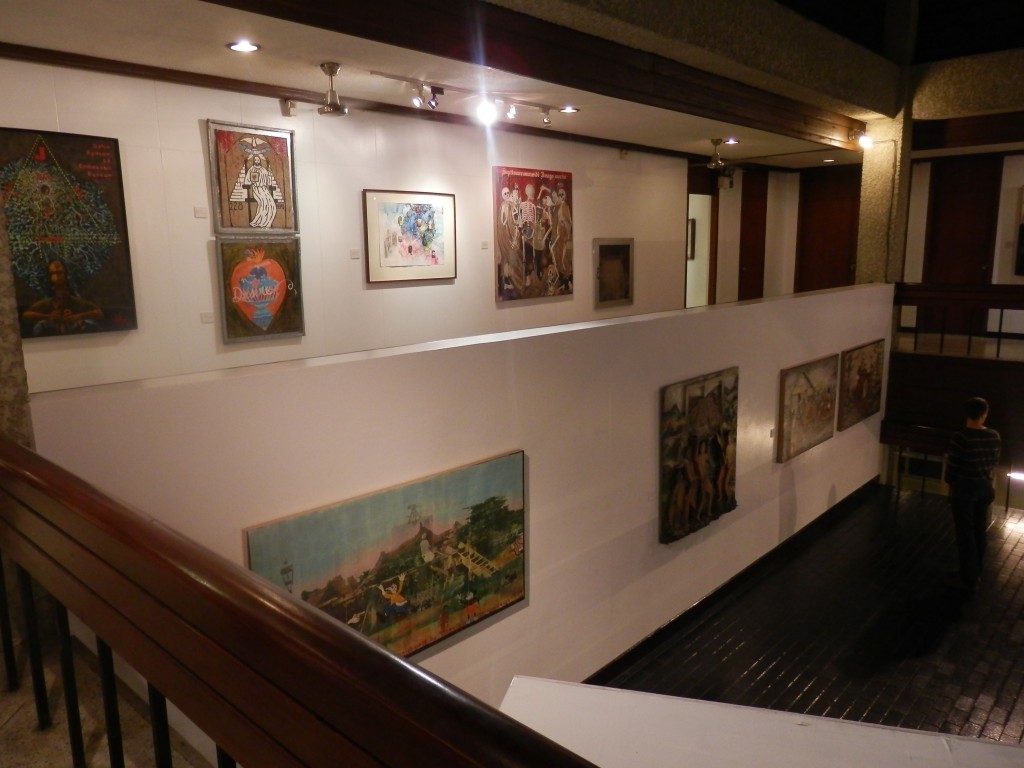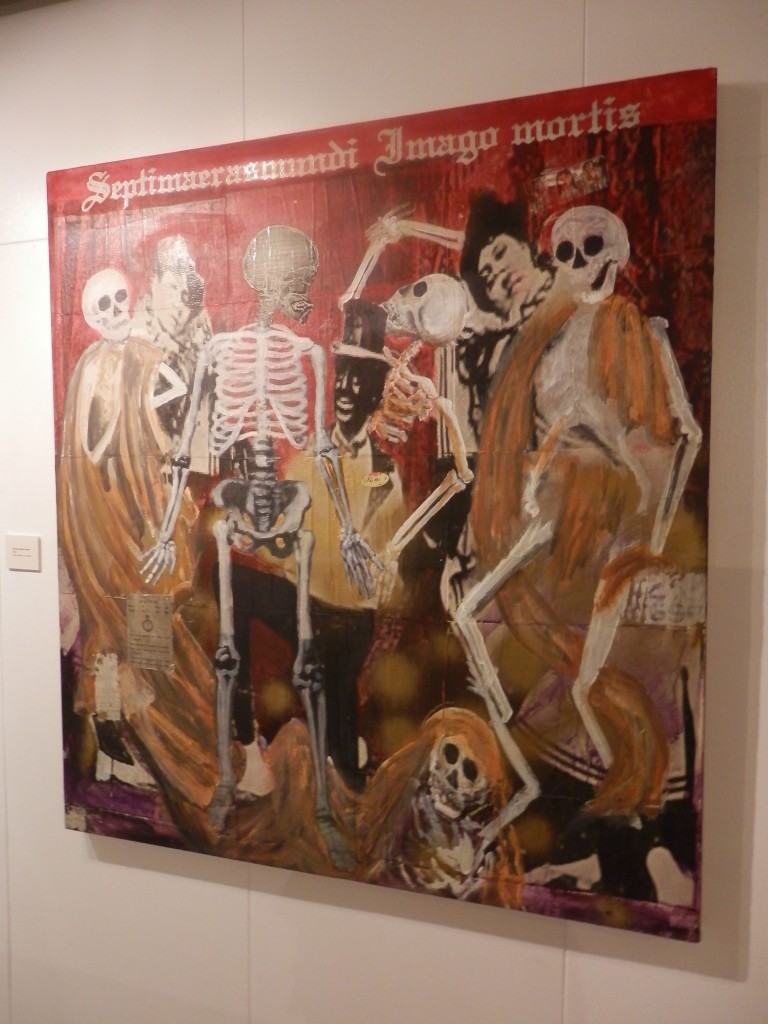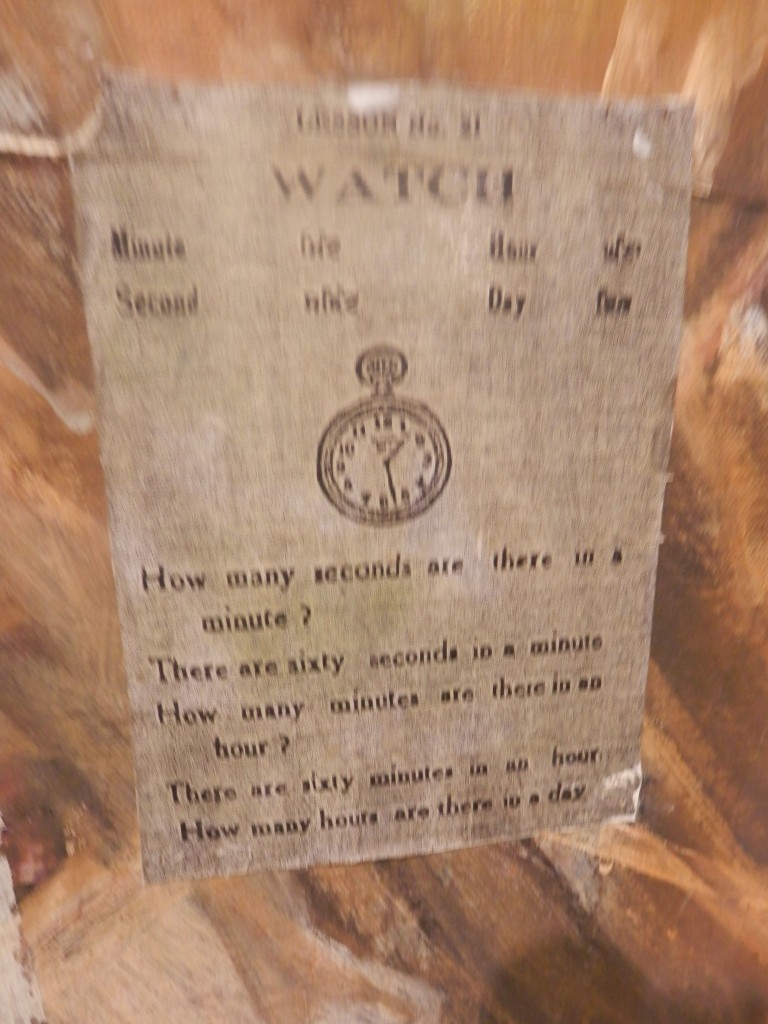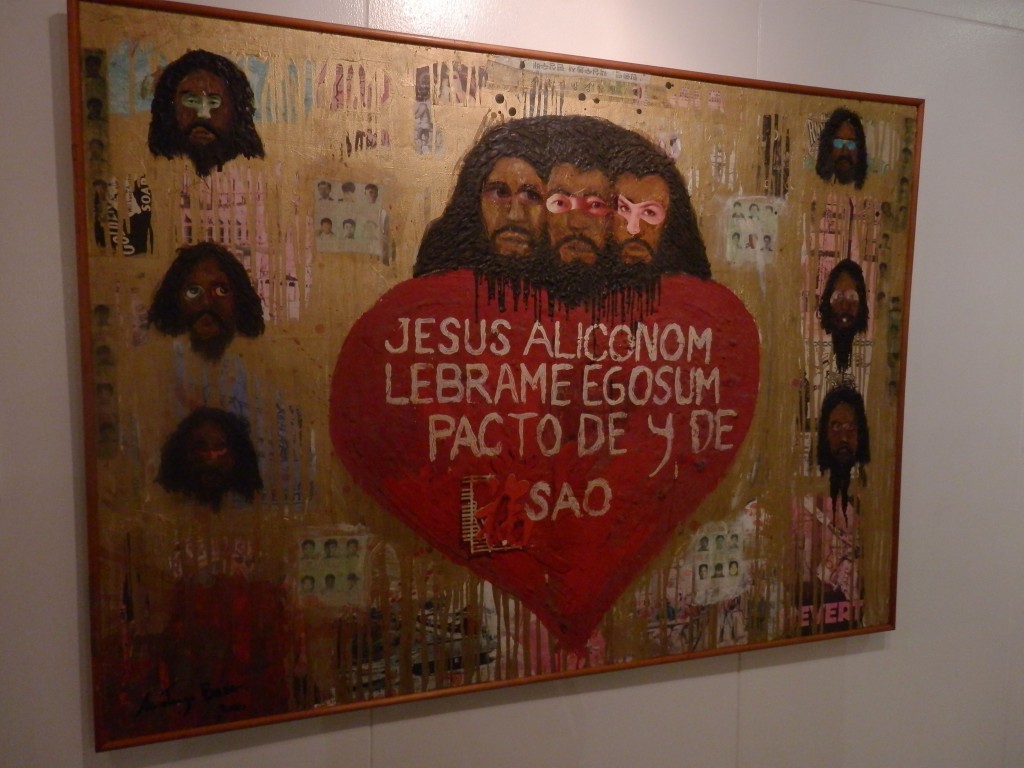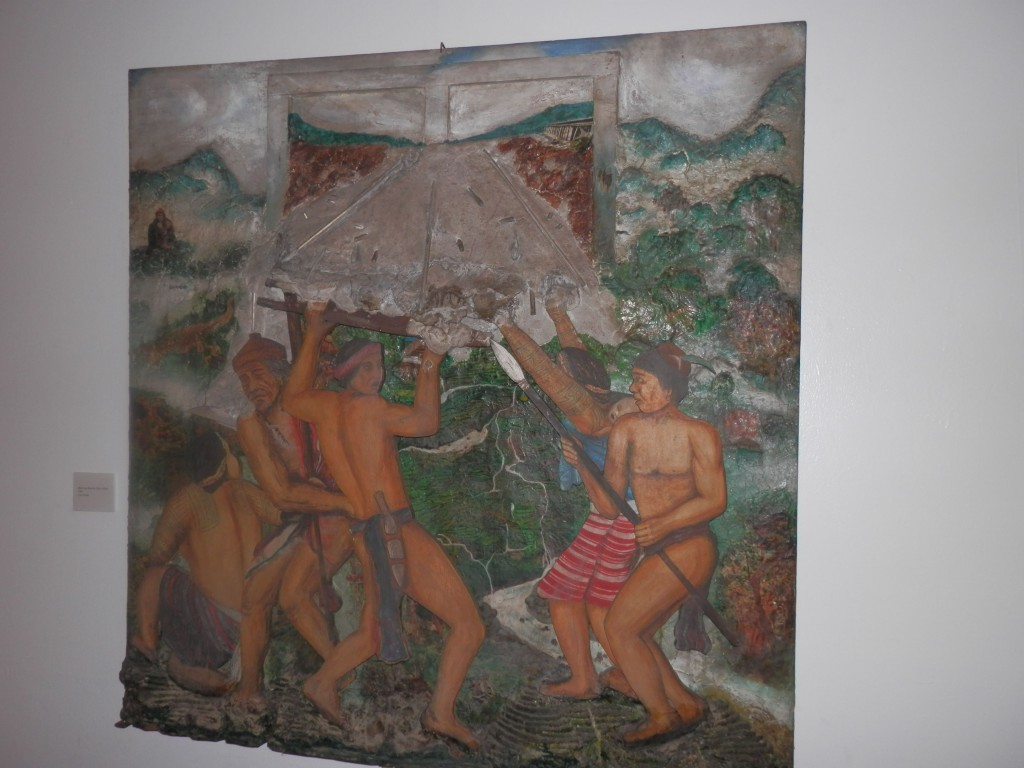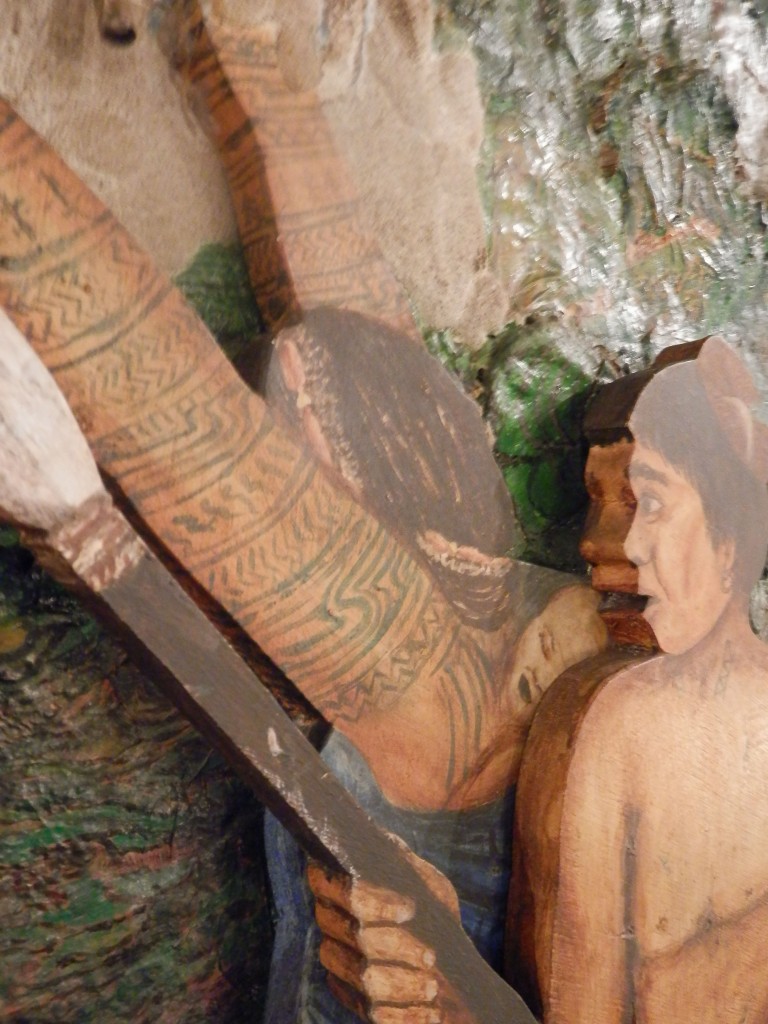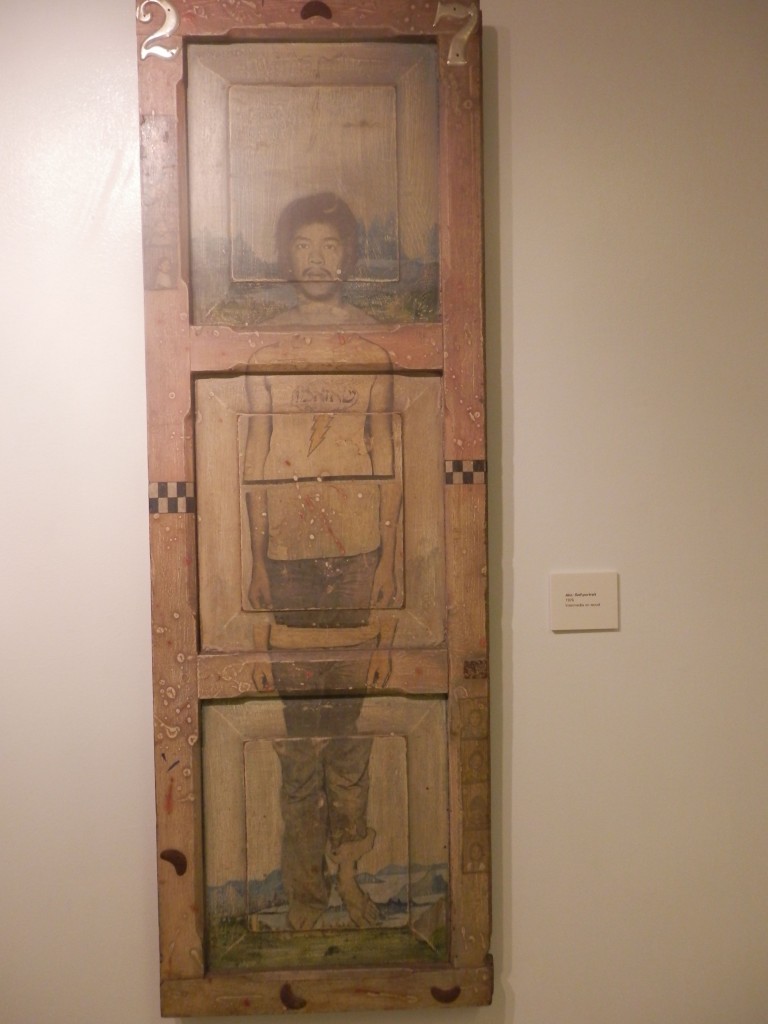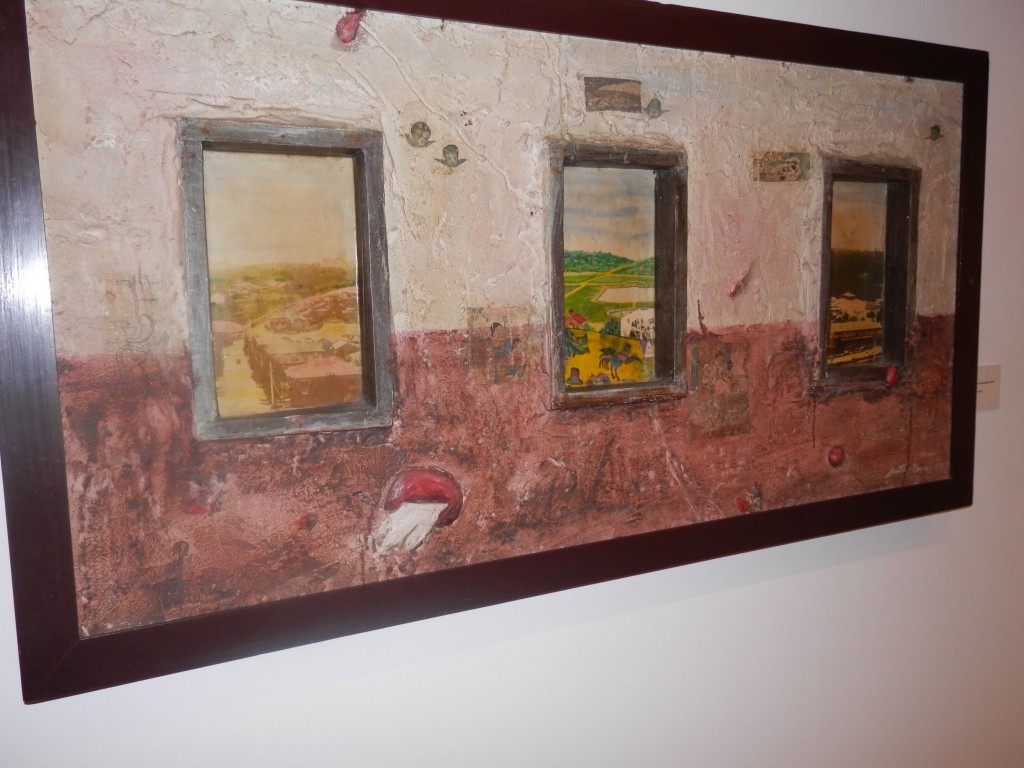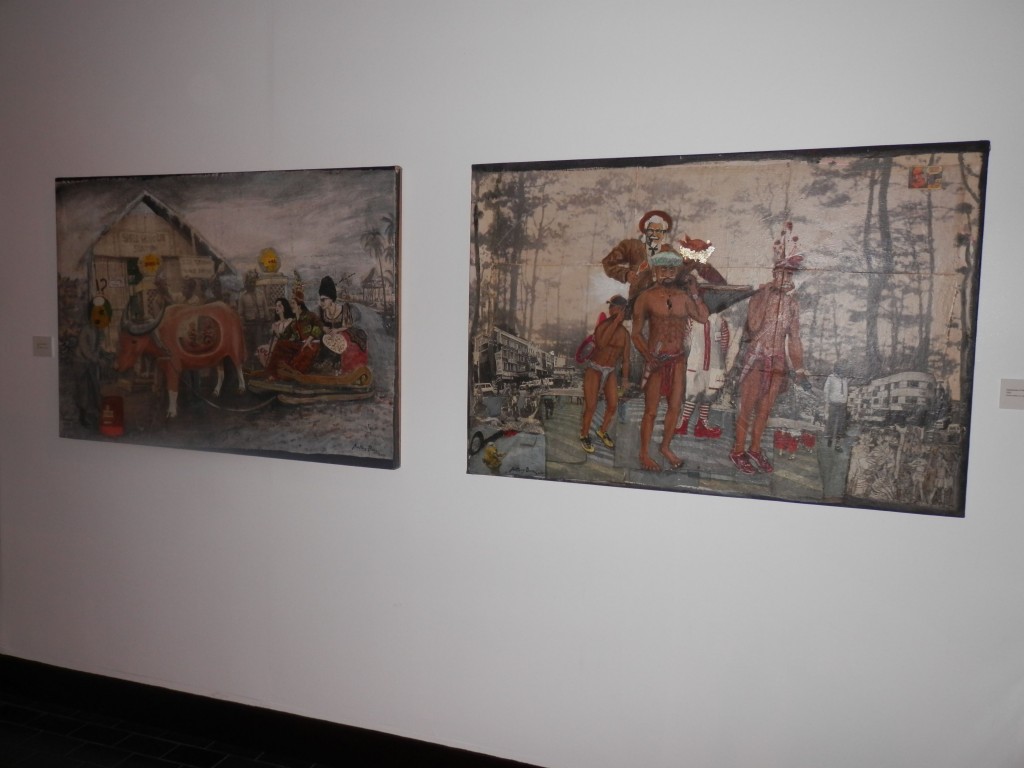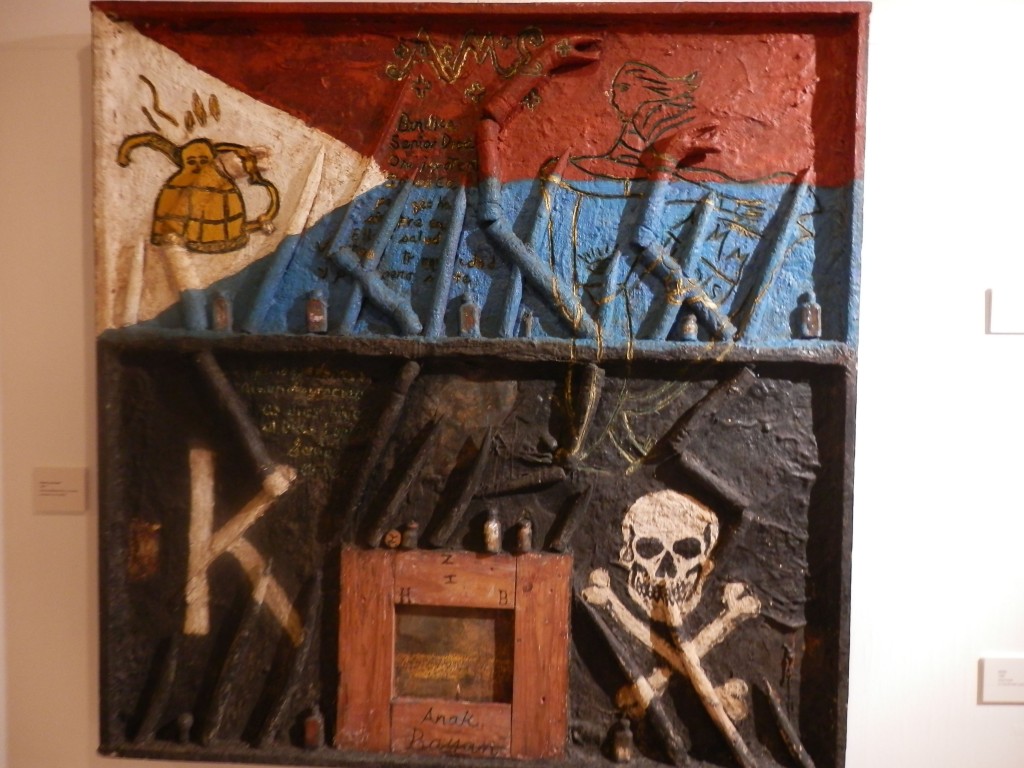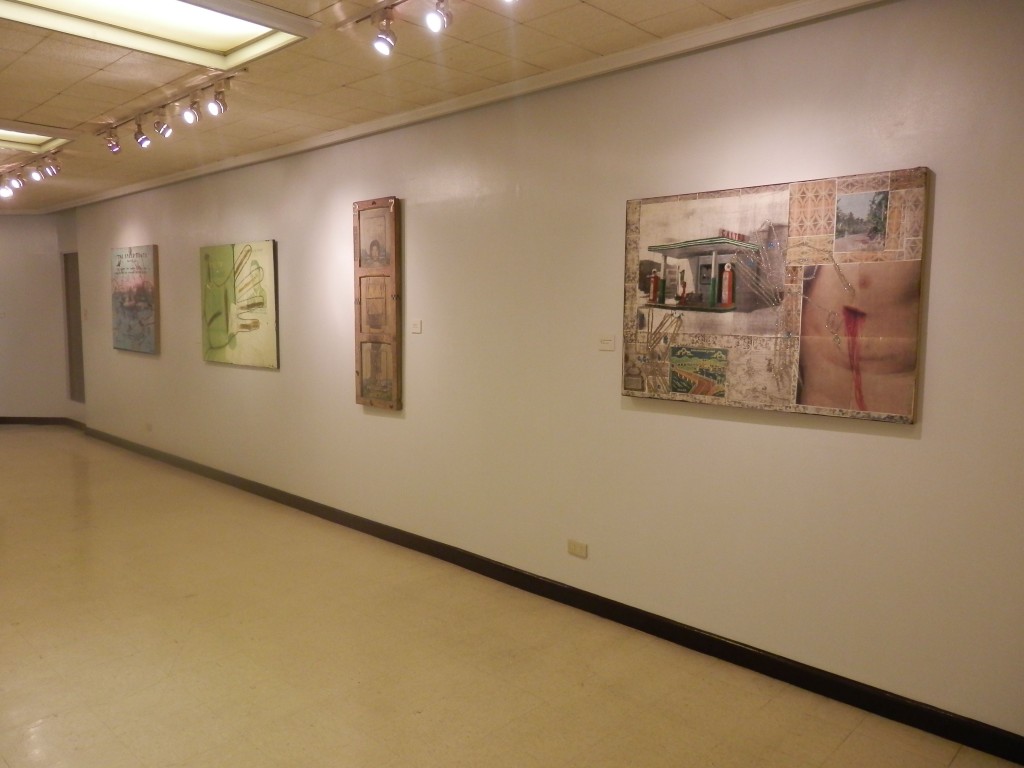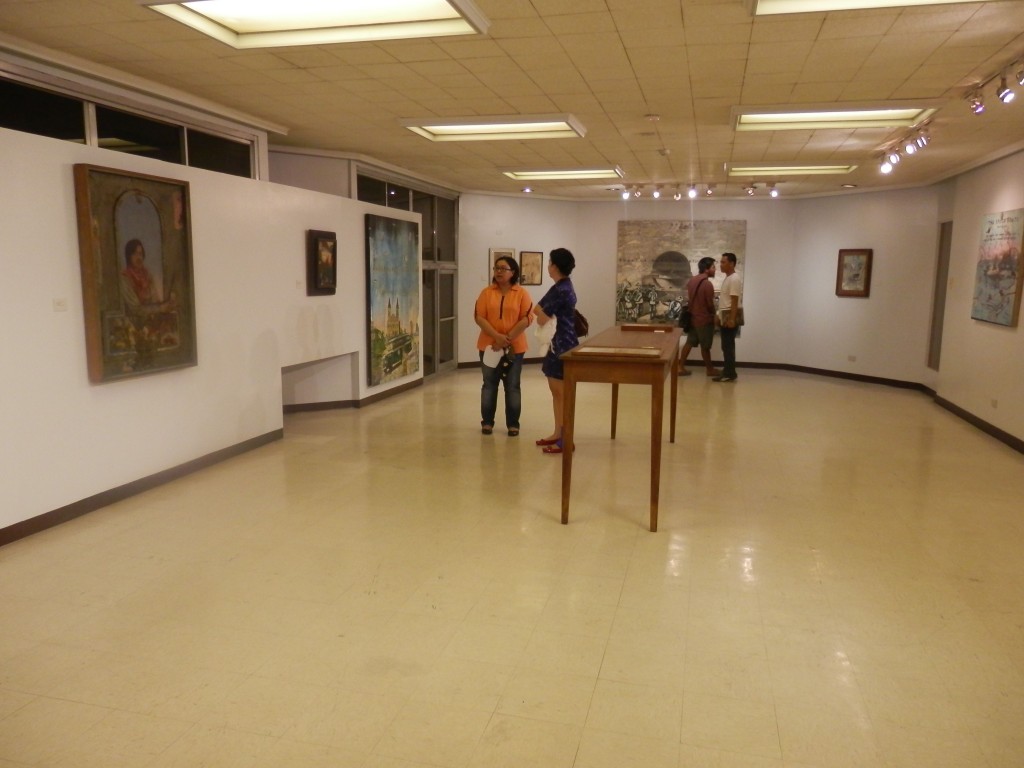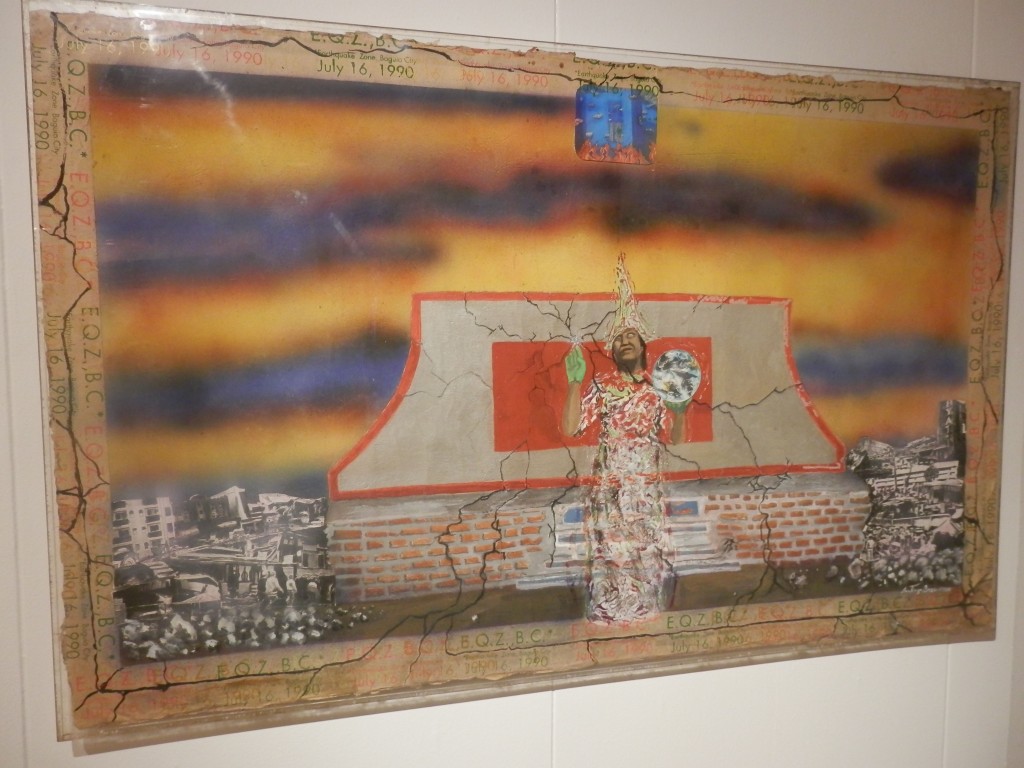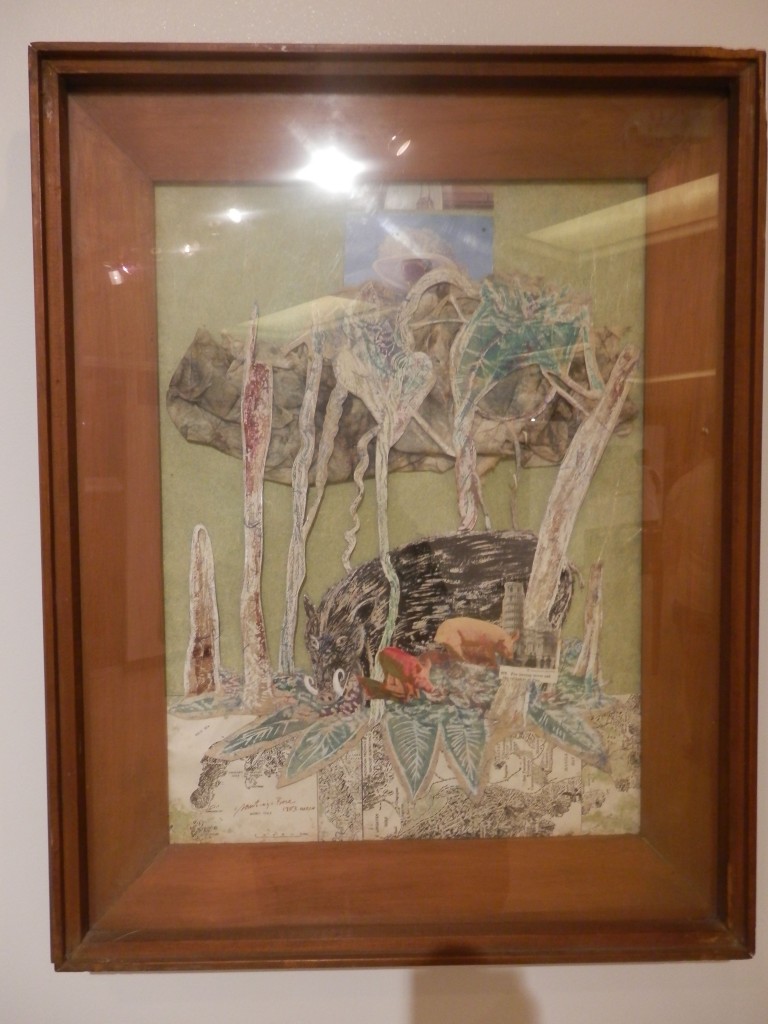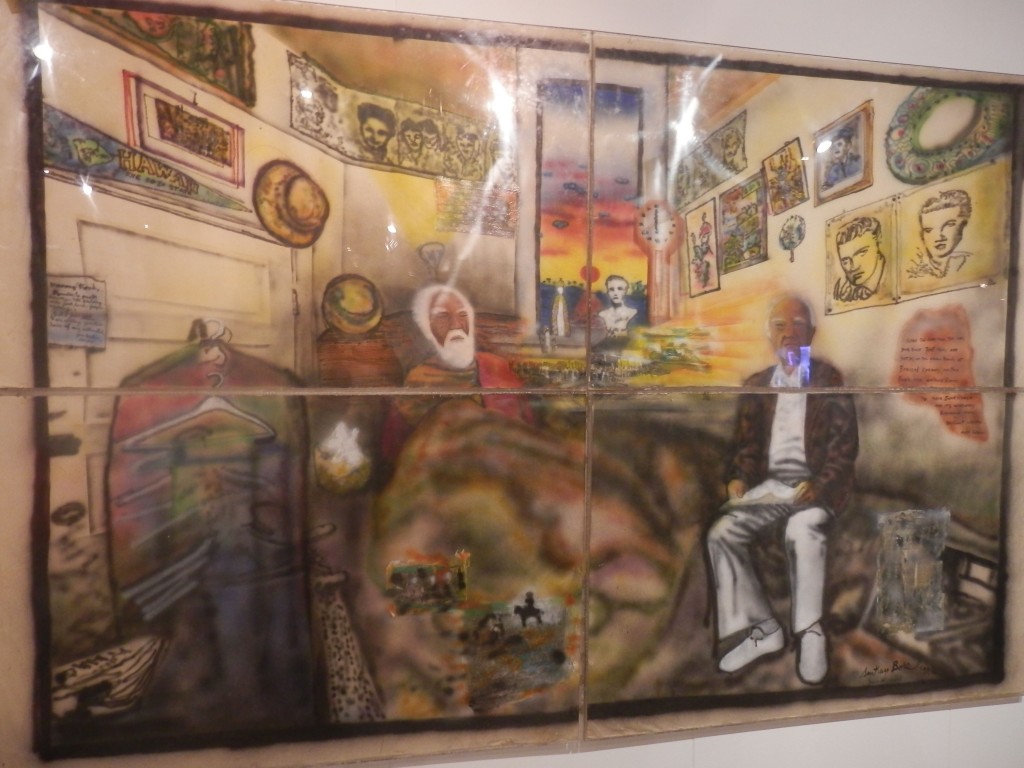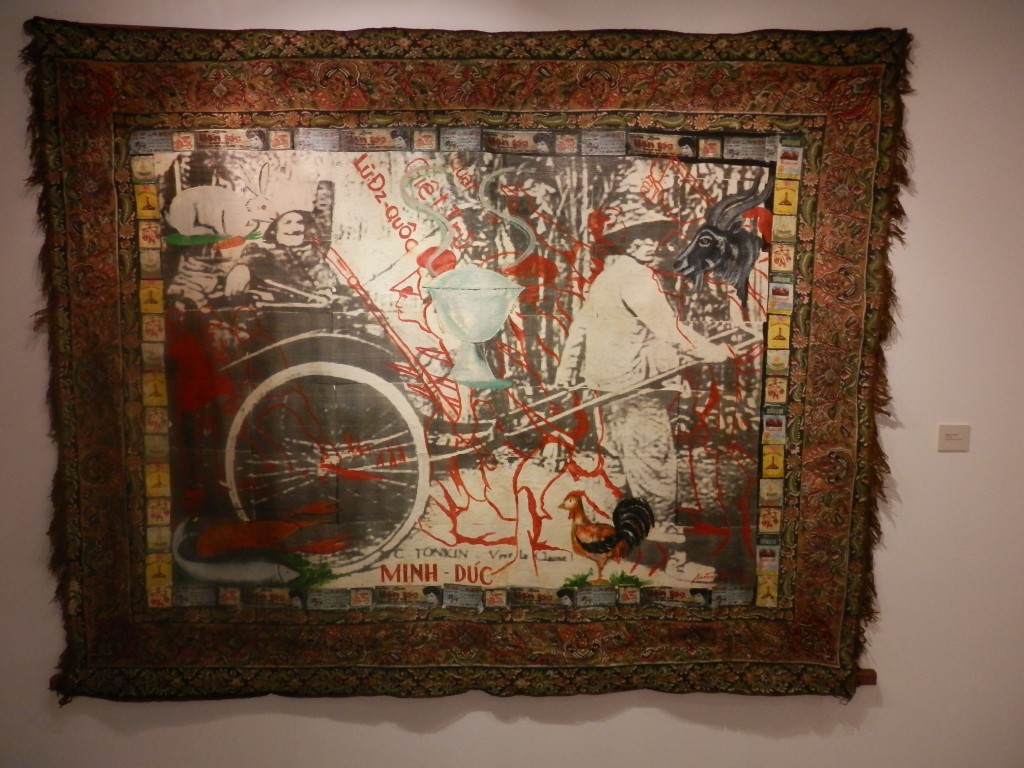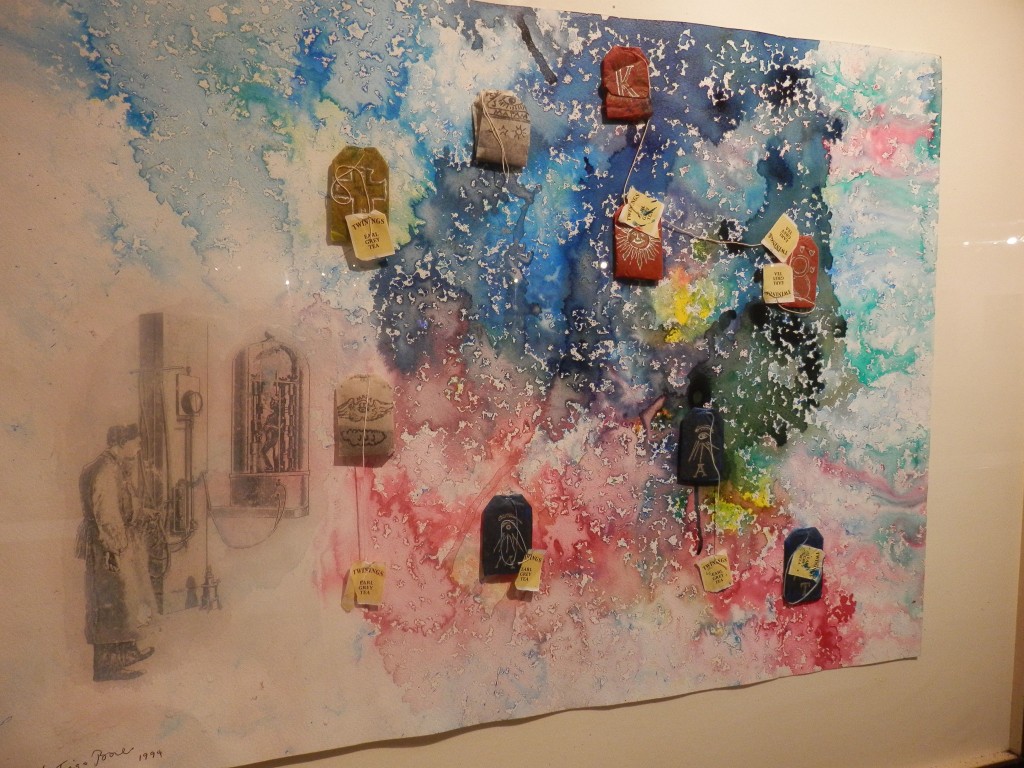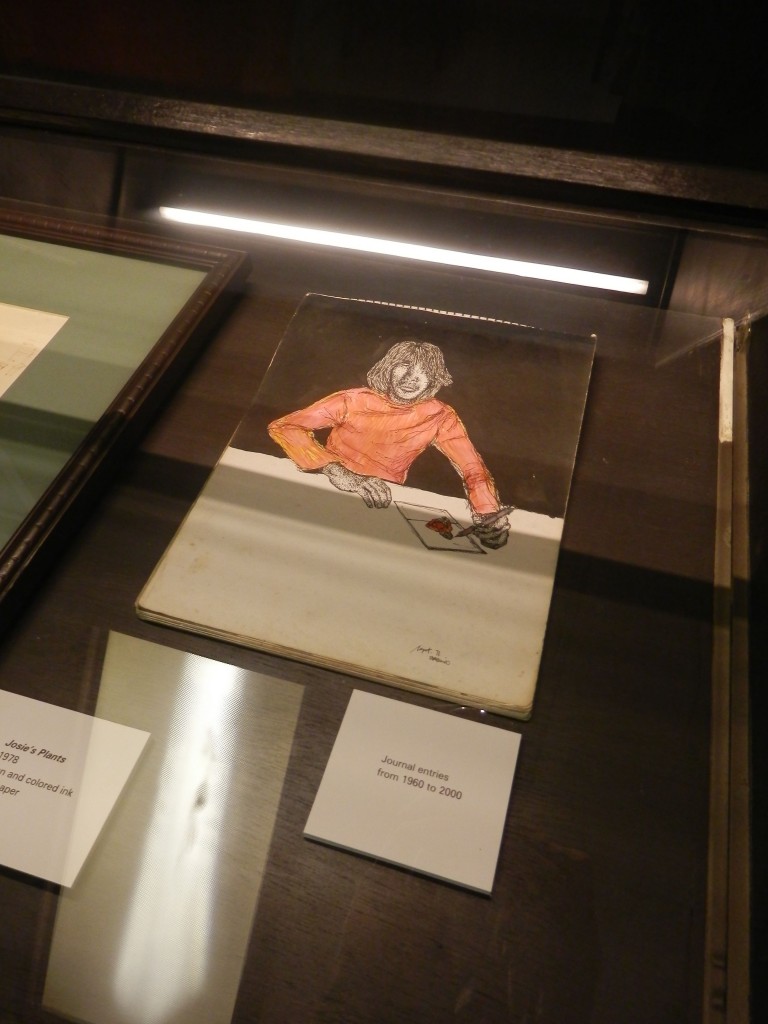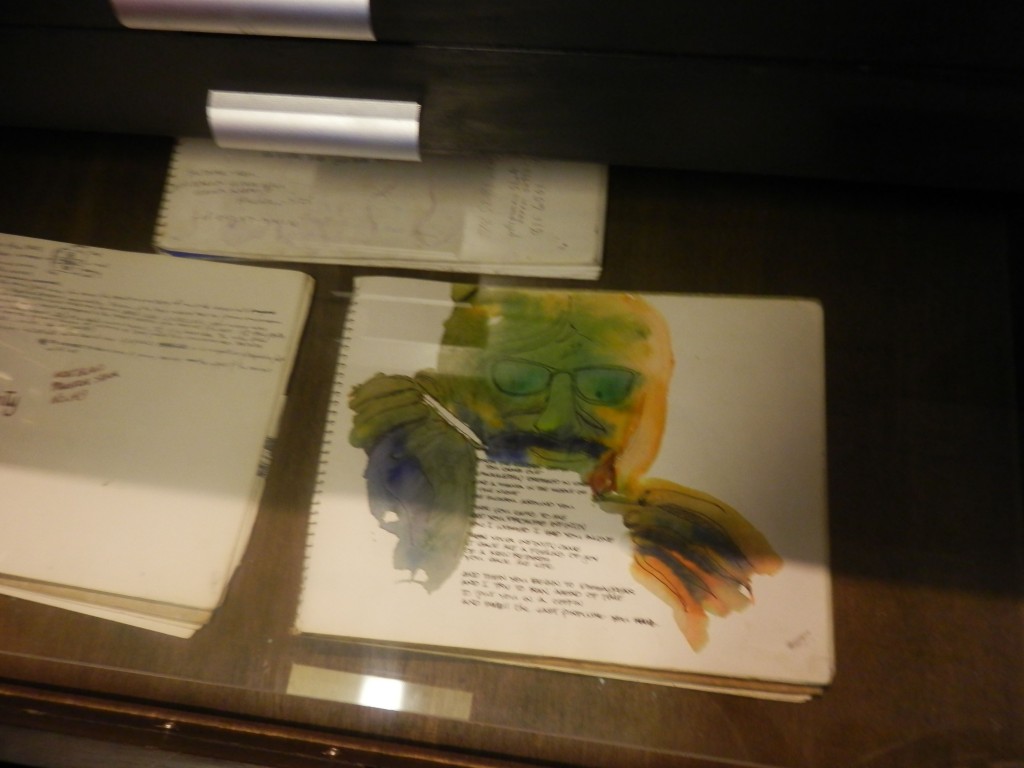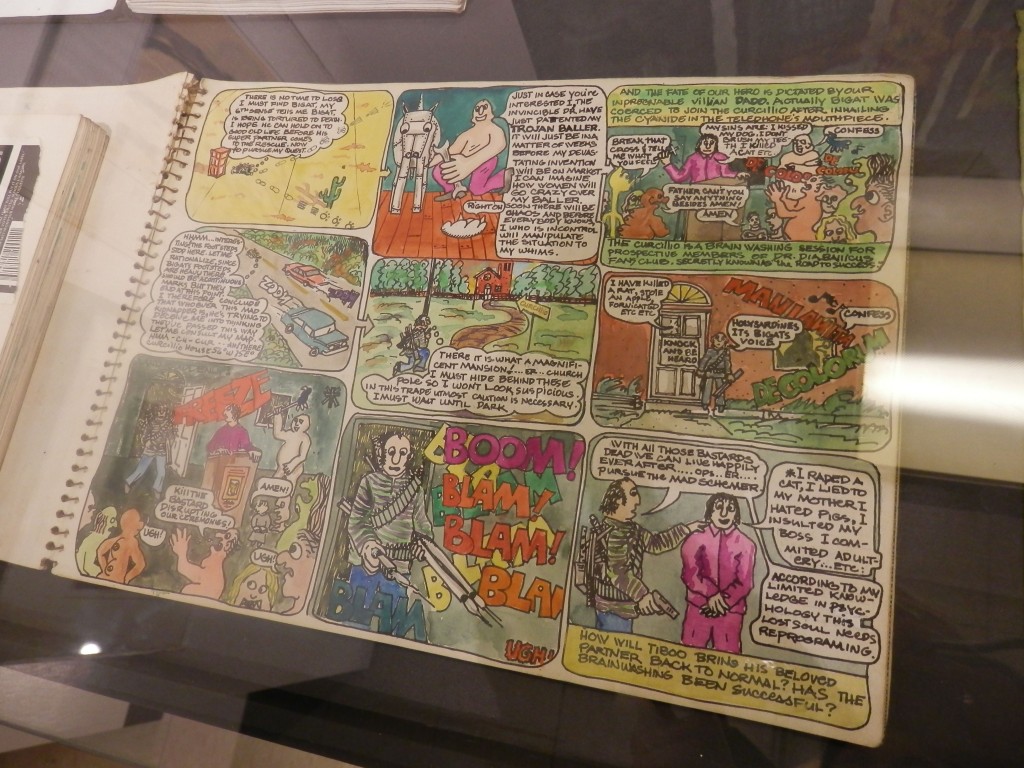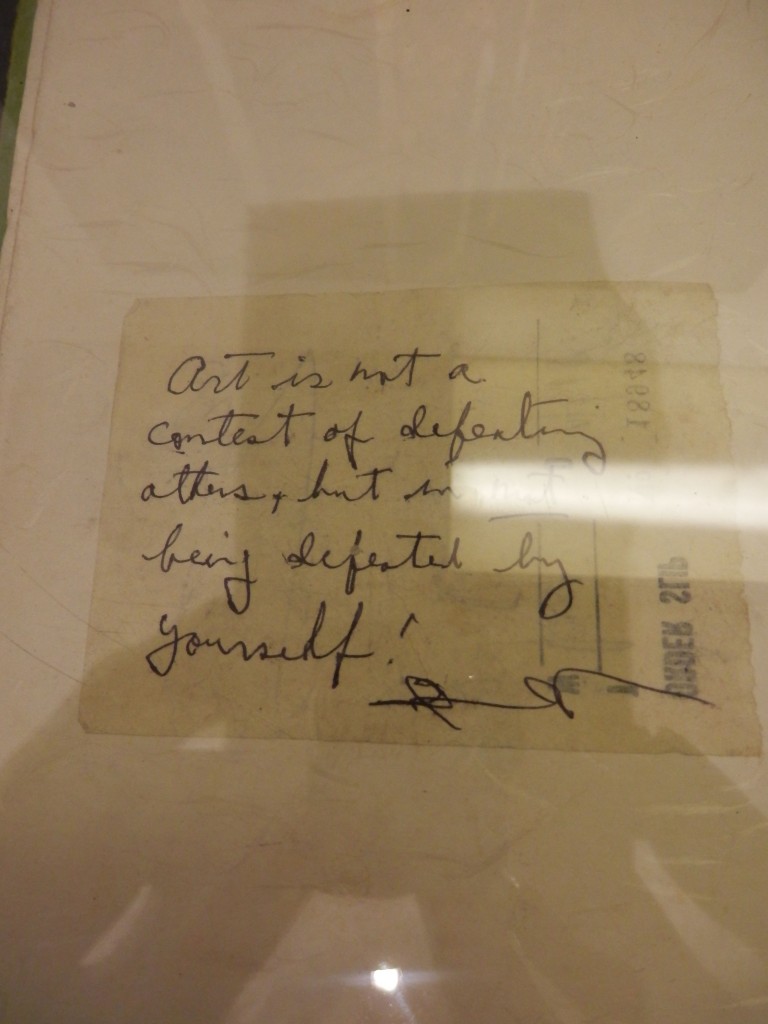“As a Filipino, I find the bulul such an iconic figure. It immediately comes to mind once I think of sculpture that’s uniquely ours. So I thought to myself, how would you present the bulul as contemporary art? How would you take it beyond its being a cultural symbol?”
So asks Ronald Ventura in the vernacular, as he stands amidst his two dozen, larger than life fiberglass pieces, black and white variants of the bulul, the rice god of Northern Philippine tribes. After two years of mounting sold out exhibits in Milan, New York, and Taipei, plus participating in the landmark survey Surreal vs. Surrealism in Contemporary Art at the Institut Valencia d’Art Modern in Spain, this exhibit at the Jorge B. Vargas Museum marks a major homecoming for the 40-year-old artist. Somewhat fitting then that his show, Watching The Watchmen, takes inspiration from indigenous Filipino culture.
Quite serendipitous too that Ronald’s show coincides with Can’t Go Back Home Again, a landmark exhibit of Santiago Bose’s art from the collection of the late artist’s family. Santi founded the Baguio Arts Guild, and the city and its culture, the same tribal influences that Ronald tackles, figure very strongly in his work.
“Ronald has always been an attentive observer of images and how images circulate in society”, comments Dr. Patrick Flores, the museum’s curator, who put together both shows. “I think he takes the bulul as an image, in fact, an icon that has been appropriated in many ways as a sign of indigenous identity, a rare collectible artifact, a commodity in the tourist trade, and so on. His project on the bulul draws our attention to the various meanings the bulul has taken on over time, and the various appropriations of it by diverse interests.”
Ronald has rendered his male and female bulul through a combination of references from art history: the tenets of cubism, some elements of pop and street art, employing anime devices, even borrowing from Damien Hirst. One particularly eye catching piece has two bulul posed a la St. Michael the Archangel defeating Satan. He has fabricated the sword that St. Michael wields to take after one from the popular computer game Final Fantasy. “When I conceptualized this”, explains the artist, “I thought to myself, what if our religious images were influenced by the bulul? How would it look like?”
Aside from his sculpture, which has been spread out to take over both ground floor spaces of the museum, the exhibit also includes three large-scale light boxes, and one mammoth collage that measures six feet high and 24 feet long. An assortment of scribbles, paper cut outs, and ink studies make up the collage, put together in the shape of a cloud. For those who follow Ronald’s work, the cloud is a familiar motif that he has utilized several times for his paintings and sculpture. It manifests the multitude of ideas that run through his mind.
The light boxes, illuminating 4 x 8 foot drawings on cloth, result from his enduring love for ink and graphite. Ronald worked on these intermittently for months, leaving them on top of his worktable to absorb the dust and dirt of his studio, the stains of food and coffee. Each piece has been crammed with seemingly random but wonderfully detailed layers of figures and patterns, familiar ones that recur in his paintings: the naked man in a gas mask, the big hand, the creature with bursting innards.
Ronald is arguably the Philippines most commercially successful visual artist, notable for the prices his paintings command at auction. He has attracted the attention of an international clientele with works that draw from varied influences, completed with unparalleled technical virtuosity, infused with more than a dash of hipness.
Asked if he derives too much from others, Ronald replies, “Art is a developmental process, how can one person claim to monopolize a certain style? The problem I always try to solve in my work is how would I bring a piece to a point where it speaks to the most number of people today? For this show, I want to remind us [Filipinos] that we have something like the bulul in our culture from which we can draw inspiration from.”
Up two flights of steps, on the museum’s third level, and we move from a lowlander urbanite’s take on the Ifugao to the original purveyor of Pinoy ethnic cool.
Although ten years have passed since he unexpectedly died at 53, Santi Bose’s wall-bound mixed media pieces feel as current and contemporary as any piece he would have made today. Many of the 86 works here date from the 1980s. Then, as a struggling artist, he had to make use of whatever materials lay easily available in Baguio, and incorporated these into his work.
The city, up in the highlands of Benguet, founded by the Americans as a salve to the heat of Manila, serves as a subject to many of Santi’s works. Its history, climate, and blend of cultures— Igorot, American, Ilocano— lend it a singular identity. We witness the same unpolished hodgepodge in Santi’s pieces, and therein lies their attraction. An authenticity dwells in his work, whether they are socio-political commentaries or self-portraits, collages on tapestries, or images derived from channeling the sun’s rays through a magnifying glass.
Because Santi’s family retained a good number of pieces, the show gives a pretty thorough overview of his art. The works on display have been kept in good condition. His journals and a copy of his college thesis are also on view, as well as video interviews, and recordings of his performances. The magnitude of the show deserves a second visit; one can’t do justice to his body of work with just one viewing.
Hats off to the Vargas Museum team for another outstanding set of exhibits. The museum has certainly cemented its reputation as a dynamic showcase of Philippine contemporary art.
Ronald Ventura Watching The Watchmen runs from 13 November to 14 December 2012 and Santiago Bose In The Family Collection, Can’t Go Back Home Again runs from 13 November to 31 January 2013 at the Jorge B. Vargas Museum, Roxas Avenue, University of The Philippines, Diliman, Quezon City. Phone (632) 928-1927 or visit www.vargasmuseum.wordpress.com or http://www.facebook.com/vargasmuseum.upd
A version of this post appears in the November 2012 issue of Town And Country Philippines. Visit https://www.facebook.com/townandcountry.ph

